Shingles hospital. Hospital Admission for Shingles Treatment: When Is It Necessary?
When does shingles require hospitalization. What are the criteria for admitting patients with herpes zoster. How severe must shingles be to warrant hospital treatment. What complications of shingles necessitate inpatient care.
Understanding Shingles and Its Severity
Shingles, also known as herpes zoster, is a viral infection caused by the reactivation of the varicella-zoster virus, which initially causes chickenpox. While most cases of shingles can be managed on an outpatient basis, certain situations may require hospital admission for more intensive treatment and monitoring.
Is shingles always a condition that can be treated at home? No, in some cases, hospitalization becomes necessary due to the severity of symptoms or complications associated with the infection.
Key Factors Influencing Hospital Admission
- Severity of pain and symptoms
- Extent and location of the rash
- Patient’s age and overall health status
- Presence of complications
- Immunocompromised state
Criteria for Hospital Admission in Shingles Cases
When evaluating a patient with shingles, healthcare providers consider several factors to determine if hospital admission is necessary. These criteria help ensure that patients receive the appropriate level of care based on their individual circumstances.

What are the main reasons for admitting a patient with shingles to the hospital? Hospital admission may be indicated in the following scenarios:
- Severe pain that cannot be adequately controlled with oral medications
- Extensive rash covering a large portion of the body
- Involvement of the eyes, ears, or other sensitive areas
- Complications such as bacterial superinfection or disseminated zoster
- Immunocompromised patients at high risk for complications
- Elderly patients with multiple comorbidities
- Inability to take oral medications or maintain adequate hydration
Complications of Shingles Requiring Hospitalization
While many cases of shingles resolve without significant complications, some patients may develop serious issues that necessitate inpatient care and close monitoring.
Which complications of shingles are most likely to require hospital admission? The following complications often warrant hospitalization:
1. Ophthalmic Zoster
When shingles affects the ophthalmic branch of the trigeminal nerve, it can lead to serious eye complications. Patients with ophthalmic zoster may require hospital admission for intensive treatment and monitoring to prevent vision loss.

2. Ramsay Hunt Syndrome
This rare complication occurs when shingles affects the facial nerve near the ear. Patients may experience facial paralysis, hearing loss, and vertigo, often requiring inpatient care for proper management.
3. Disseminated Zoster
In some cases, particularly in immunocompromised individuals, shingles can spread beyond the initial dermatome, affecting multiple areas of the body. This disseminated form of the infection often requires hospitalization for intravenous antiviral therapy and close monitoring.
4. Bacterial Superinfection
Secondary bacterial infections of shingles lesions can lead to cellulitis or other serious skin infections. Patients with extensive or severe bacterial superinfections may need inpatient care for intravenous antibiotics and wound management.
Special Considerations for Immunocompromised Patients
Patients with weakened immune systems are at higher risk for severe shingles and its complications. This group includes individuals with HIV/AIDS, cancer patients undergoing chemotherapy, organ transplant recipients, and those on immunosuppressive medications.

How does an immunocompromised state affect the decision for hospital admission in shingles cases? Immunocompromised patients often require a lower threshold for hospital admission due to their increased risk of severe disease and complications. These patients may benefit from early intravenous antiviral therapy and close monitoring in a hospital setting.
Factors Influencing Admission for Immunocompromised Patients
- Severity and extent of the rash
- Presence of systemic symptoms
- Risk of disseminated zoster
- Ability to tolerate oral medications
- Need for pain management
- Underlying medical conditions
Elderly Patients and Shingles Hospitalization
Older adults are at increased risk for developing shingles and experiencing more severe symptoms and complications. The decision to admit an elderly patient with shingles to the hospital often depends on a combination of factors.
Why are elderly patients with shingles more likely to require hospitalization? Elderly individuals may have multiple comorbidities, decreased immune function, and a higher risk of developing postherpetic neuralgia. These factors can complicate the course of shingles and necessitate more intensive care.

Considerations for Hospital Admission in Elderly Patients
- Severity of pain and its impact on daily activities
- Presence of other medical conditions
- Risk of dehydration or malnutrition
- Ability to comply with outpatient treatment regimens
- Social support and living situation
- Risk of falls or other complications due to pain or medication side effects
Inpatient Management of Severe Shingles
Once a patient is admitted to the hospital for shingles treatment, the focus is on managing symptoms, preventing complications, and addressing any underlying issues that may have contributed to the severity of the infection.
What are the key components of inpatient shingles management? Hospital treatment for severe shingles typically includes:
- Intravenous antiviral medications (e.g., acyclovir)
- Pain management with opioids or other analgesics
- Fluid and electrolyte management
- Treatment of any complications (e.g., antibiotics for bacterial superinfection)
- Monitoring of organ function and overall health status
- Wound care for extensive or complicated rashes
- Consultation with specialists (e.g., ophthalmologists for ophthalmic zoster)
Duration of Hospital Stay
The length of hospitalization for shingles can vary depending on the individual patient’s condition and response to treatment. Most patients require a hospital stay of 3-7 days, but this can be longer in cases of severe complications or for immunocompromised individuals.

Preventing Shingles-Related Hospitalizations
While some cases of shingles may inevitably require hospital admission, there are strategies to reduce the likelihood of severe disease and complications that necessitate inpatient care.
How can the risk of hospitalization for shingles be minimized? Preventive measures include:
- Vaccination with the shingles vaccine (Shingrix) for adults 50 years and older
- Early recognition and treatment of shingles symptoms
- Prompt initiation of antiviral therapy within 72 hours of rash onset
- Proper management of underlying medical conditions
- Regular health check-ups for early detection of potential risk factors
The Role of Shingles Vaccination
Vaccination plays a crucial role in preventing shingles and reducing the severity of the disease if it does occur. The recombinant zoster vaccine (Shingrix) is highly effective in preventing shingles and its complications, including postherpetic neuralgia.
Who should receive the shingles vaccine? The Centers for Disease Control and Prevention (CDC) recommends Shingrix for adults 50 years and older, including those who have previously received the older shingles vaccine (Zostavax) or have had shingles in the past.

Post-Hospitalization Care and Follow-Up
After discharge from the hospital, patients who have been treated for severe shingles require ongoing care and monitoring to ensure proper healing and to address any lingering symptoms or complications.
What does post-hospitalization care for shingles patients typically involve? Follow-up care may include:
- Continuation of oral antiviral medications
- Pain management strategies
- Wound care instructions for healing rashes
- Monitoring for development of postherpetic neuralgia
- Follow-up appointments with primary care providers and specialists
- Psychological support for dealing with the impact of severe shingles
- Education on preventing future episodes and managing risk factors
Long-Term Complications and Management
Some patients may experience long-term complications following severe shingles, particularly postherpetic neuralgia (PHN). PHN is characterized by persistent pain in the affected area even after the rash has healed.
How is postherpetic neuralgia managed after hospital discharge? Treatment options for PHN may include:

- Topical pain relievers (e.g., lidocaine patches)
- Oral medications such as gabapentin or pregabalin
- Tricyclic antidepressants
- Opioid pain medications in severe cases
- Non-pharmacological approaches like transcutaneous electrical nerve stimulation (TENS)
- Referral to pain management specialists for refractory cases
By understanding the criteria for hospital admission in shingles cases and the importance of proper management, both healthcare providers and patients can work together to ensure the best possible outcomes for those affected by this challenging condition.
When is hospital admission indicated for the treatment of herpes zoster (shingles)?
Author
Camila K Janniger, MD Clinical Professor of Dermatology, Clinical Associate Professor of Pediatrics, Chief of Pediatric Dermatology, Rutgers New Jersey Medical School
Camila K Janniger, MD is a member of the following medical societies: American Academy of Dermatology
Disclosure: Nothing to disclose.
Coauthor(s)
Joseph S Eastern, MD Clinical Assistant Professor, Department of Internal Medicine, Section of Dermatology, University of Medicine and Dentistry of New Jersey; Clinical Assistant Professor, Seton Hall University School of Graduate Medical Education
Joseph S Eastern, MD is a member of the following medical societies: American Academy of Dermatology, American Medical Association, American Society for Dermatologic Surgery, International Society for Dermatologic Surgery, Medical Society of New Jersey
Disclosure: Nothing to disclose.
Duane R Hospenthal, MD, PhD, FACP, FIDSA, FASTMH Physician, San Antonio Infectious Diseases Consultants; Adjunct Professor of Medicine, Department of Medicine, University of Texas Health Science Center at San Antonio
Duane R Hospenthal, MD, PhD, FACP, FIDSA, FASTMH is a member of the following medical societies: Alpha Omega Alpha, American College of Physicians, American Medical Association, American Society for Microbiology, American Society of Tropical Medicine and Hygiene, Armed Forces Infectious Diseases Society, Infectious Diseases Society of America, International Society for Human and Animal Mycology, International Society for Infectious Diseases, International Society of Travel Medicine, Medical Mycological Society of the Americas, Society for Healthcare Epidemiology of America
Disclosure: Nothing to disclose.
James E Moon, MD, FACP, FIDSA Director, Center for Enabling Capabilities, Walter Reed Army Institute of Research; Assistant Professor, Department of Medicine, Uniformed Services University of the Health Sciences
James E Moon, MD, FACP, FIDSA is a member of the following medical societies: American College of Physicians-American Society of Internal Medicine, American Society of Tropical Medicine and Hygiene, Armed Forces Infectious Diseases Society, Infectious Diseases Society of America
Disclosure: Nothing to disclose.
Chief Editor
Dirk M Elston, MD Professor and Chairman, Department of Dermatology and Dermatologic Surgery, Medical University of South Carolina College of Medicine
Dirk M Elston, MD is a member of the following medical societies: American Academy of Dermatology
Disclosure: Nothing to disclose.
Acknowledgements
Wayne E Anderson, DO Assistant Professor of Internal Medicine/Neurology, College of Osteopathic Medicine of the Pacific Western University of Health Sciences; Clinical Faculty in Family Medicine, Touro University College of Osteopathic Medicine; Clinical Instructor, Departments of Neurology and Pain Management, California Pacific Medical Center
Wayne E Anderson, DO is a member of the following medical societies: American Academy of Neurology, American Medical Association, American Society of Law, Medicine & Ethics, California Medical Association, and San Francisco Medical Society
webmd.com”>Disclosure: Teva Honoraria Speaking and teaching; Pfizer Honoraria Speaking and teaching; Insys Honoraria Speaking and teaching; DepoMed Honoraria Speaking and teachingJeffrey Glenn Bowman, MD, MS Consulting Staff, Highfield MRI
Disclosure: Nothing to disclose.
Kevin P Connelly, DO Clinical Assistant Professor, Department of Pediatrics, Division of General Pediatrics and Emergency Care, Virginia Commonwealth University School of Medicine; Medical Director, Paws for Health Pet Visitation Program of the Richmond SPCA; Pediatric Emergency Physician, Emergency Consultants Inc, Chippenham Medical Center
Kevin P Connelly, DO is a member of the following medical societies: American Academy of Pediatrics, American College of Osteopathic Pediatricians, and American Osteopathic Association
webmd.com”>Disclosure: Nothing to disclose.Burke A Cunha, MD Professor of Medicine, State University of New York School of Medicine at Stony Brook; Chief, Infectious Disease Division, Winthrop-University Hospital
Burke A Cunha, MD is a member of the following medical societies: American College of Chest Physicians, American College of Physicians, and Infectious Diseases Society of America
Disclosure: Nothing to disclose.
Maria M Diaz, MD Staff Physician, Department of Emergency Medicine, Memorial Hospital
Maria M Diaz, MD is a member of the following medical societies: American College of Emergency Physicians, Emergency Medicine Residents Association, and Phi Beta Kappa
Disclosure: Nothing to disclose.
Andrea N Driano, MD Consulting Staff, Department of Emergency Medicine, Children’s Hospital and Medical Center, Seattle WA
Disclosure: Nothing to disclose.
Steven C Dronen, MD, FAAEM Chair, Department of Emergency Medicine, LeConte Medical Center
Steven C Dronen, MD, FAAEM is a member of the following medical societies: American Academy of Emergency Medicine and Society for Academic Emergency Medicine
Disclosure: Nothing to disclose.
Franklin Flowers, MD Chief, Division of Dermatology, Professor, Department of Medicine and Otolaryngology, Affiliate Associate Professor of Pediatrics and Pathology, University of Florida College of Medicine
webmd.com”>Franklin Flowers, MD, is a member of the following medical societies: American College of Mohs Micrographic Surgery and Cutaneous OncologyDisclosure: Nothing to disclose.
C Stephen Foster, MD, FACS, FACR, FAAO Clinical Professor of Ophthalmology, Harvard Medical School; Consulting Staff, Department of Ophthalmology, Massachusetts Eye and Ear Infirmary; Founder and President, Ocular Immunology and Uveitis Foundation, Massachusetts Eye Research and Surgery Institution
C Stephen Foster, MD, FACS, FACR, FAAO is a member of the following medical societies: Alpha Omega Alpha, American Academy of Ophthalmology, American Association of Immunologists, American College of Rheumatology, American College of Surgeons, American Federation for Clinical Research, American Medical Association, American Society for Microbiology, American Uveitis Society, Association for Research in Vision and Ophthalmology, Massachusetts Medical Society, Royal Society of Medicine, and Sigma Xi
webmd.com”>Disclosure: Nothing to disclose.Kilbourn Gordon III, MD, FACEP Urgent Care Physician
Kilbourn Gordon III, MD, FACEP is a member of the following medical societies: American Academy of Ophthalmology and Wilderness Medical Society
Disclosure: Nothing to disclose.
Robin R Hemphill, MD, MPH Associate Professor, Director, Quality and Safety, Department of Emergency Medicine, Emory University School of Medicine
Robin R Hemphill, MD, MPH is a member of the following medical societies: American College of Emergency Physicians and Society for Academic Emergency Medicine
Disclosure: Nothing to disclose.
Ryan I Huffman, MD, Staff Physician, Department of Ophthalmology, Yale-New Haven Hospital
webmd.com”>Disclosure: Nothing to disclose.Camila K Janniger, MD Clinical Professor of Dermatology, Clinical Associate Professor of Pediatrics, Chief of Pediatric Dermatology, New Jersey Medical School
Camila K Janniger, MD is a member of the following medical societies: American Academy of Dermatology
Disclosure: Nothing to disclose.
Richard S Krause, MD Senior Clinical Faculty/Clinical Assistant Professor, Department of Emergency Medicine, University of Buffalo State University of New York School of Medicine and Biomedical Sciences
Richard S Krause, MD is a member of the following medical societies: Alpha Omega Alpha, American Academy of Emergency Medicine, American College of Emergency Physicians, and Society for Academic Emergency Medicine
webmd.com”>Disclosure: Nothing to disclose.Paul Krusinski, MD Director of Dermatology, Fletcher Allen Health Care; Professor, Department of Internal Medicine, University of Vermont College of Medicine
Paul Krusinski, MD is a member of the following medical societies: American Academy of Dermatology, American College of Physicians, and Society for Investigative Dermatology
Disclosure: Nothing to disclose.
Simon K Law, MD, PharmD Associate Professor of Ophthalmology, Jules Stein Eye Institute, University of California, Los Angeles, David Geffen School of Medicine
Simon K Law, MD, PharmD is a member of the following medical societies: American Academy of Ophthalmology, American Glaucoma Society, and Association for Research in Vision and Ophthalmology
webmd.com”>Disclosure: Nothing to disclose.Cynthia Haeshin Moon, MD Staff Physician, Department of Emergency Medicine, SUNY Downstate Medical Center/Kings County Hospital Center
Disclosure: Nothing to disclose.
Barbara L Roque, MD Full Partner, Ophthalmic Consultants Philippines Co; Service Chief, Pediatric Ophthalmology and Strabismus, Department of Ophthalmology, Asian Hospital and Medical Center; Active Staff, International Eye Institute, St Luke’s Medical Center Global City; Visiting Ophthalmologist, AMC Eye Center, Alabang Medical Center
Barbara L Roque, MD is a member of the following medical societies: American Academy of Ophthalmology, American Association for Pediatric Ophthalmology and Strabismus, American Society of Cataract and Refractive Surgery, Philippine Academy of Ophthalmology, Philippine Society of Cataract and Refractive Surgery, and Philippine Society of Pediatric Ophthalmology
webmd.com”>Disclosure: Nothing to disclose.Manolette R Roque, MD, MBA General Manager, Full Partner, Ophthalmic Consultants Philippines Co.; President and CEO, Chief Refractive Surgeon, EYE REPUBLIC Ophthalmology Clinic; Section Chief, Ocular Immunology and Uveitis, Department of Ophthalmology, Asian Hospital and Medical Center; Section Chief, Ocular Immunology and Uveitis, International Eye Institute, St Luke’s Medical Center Global City; Senior Eye Surgeon, The LASIK Surgery Clinic; Director, AMC Eye Center, Alabang Medical Center; President, Philippine Ocular Inflammation Society
Manolette R Roque, MD, MBA is a member of the following medical societies: American Academy of Ophthalmic Executives, American Academy of Ophthalmology, American Society of Cataract and Refractive Surgery, American Society of Ophthalmic Administrators, American Uveitis Society, International Ocular Inflammation Society, Philippine Medical Association, Philippine Ocular Inflammation Society, and Philippine Society of Cataract and Refractive Surgery
webmd.com”>Disclosure: Nothing to disclose.Hampton Roy Sr, MD Associate Clinical Professor, Department of Ophthalmology, University of Arkansas for Medical Sciences
Hampton Roy Sr, MD is a member of the following medical societies: American Academy of Ophthalmology, American College of Surgeons, and Pan-American Association of Ophthalmology
Disclosure: Nothing to disclose.
Robert A Schwartz, MD, MPH Professor and Head, Dermatology, Professor of Pathology, Pediatrics, Medicine, and Preventive Medicine and Community Health, University of Medicine and Dentistry of New Jersey-New Jersey Medical School
Robert A Schwartz, MD, MPH is a member of the following medical societies: Alpha Omega Alpha, American Academy of Dermatology, American College of Physicians, and Sigma Xi
webmd.com”>Disclosure: Nothing to disclose.Mark A Silverberg, MD, MMB, FACEP Assistant Professor, Associate Residency Director, Department of Emergency Medicine, State University of New York Downstate College of Medicine; Consulting Staff, Department of Emergency Medicine, Staten Island University Hospital, Kings County Hospital, University Hospital, State University of New York Downstate Medical Center
Mark A Silverberg, MD, MMB, FACEP is a member of the following medical societies: American College of Emergency Physicians, American Medical Association, Council of Emergency Medicine Residency Directors, and Society for Academic Emergency Medicine
Disclosure: Nothing to disclose.
Francisco Talavera, PharmD, PhD Adjunct Assistant Professor, University of Nebraska Medical Center College of Pharmacy; Editor-in-Chief, Medscape Drug Reference
webmd.com”>Disclosure: Medscape Salary EmploymentFlorian P Thomas, MD, MA, PhD, Drmed Director, Regional MS Center of Excellence, St Louis Veterans Affairs Medical Center; Director, National MS Society Multiple Sclerosis Center; Director, Neuropathy Association Center of Excellence, Professor, Department of Neurology and Psychiatry, Associate Professor, Institute for Molecular Virology, St Louis University School of Medicine
Florian P Thomas, MD, MA, PhD, Drmed is a member of the following medical societies: American Academy of Neurology, American Neurological Association, American Paraplegia Society, Consortium of Multiple Sclerosis Centers, National Multiple Sclerosis Society, and Sigma Xi
Disclosure: Nothing to disclose.
Richard P Vinson, MD Assistant Clinical Professor, Department of Dermatology, Texas Tech University Health Sciences Center, Paul L Foster School of Medicine; Consulting Staff, Mountain View Dermatology, PA
webmd.com”>Richard P Vinson, MD is a member of the following medical societies: American Academy of Dermatology, Association of Military Dermatologists, Texas Dermatological Society, and Texas Medical AssociationDisclosure: Nothing to disclose.
Mark R Wallace, MD, FACP, FIDSA Clinical Professor of Medicine, Florida State University College of Medicine; Head of Infectious Disease Fellowship Program, Orlando Regional Medical Center
Mark R Wallace, MD, FACP, FIDSA is a member of the following medical societies: American College of Physicians, American Medical Association, American Society of Tropical Medicine and Hygiene, and Infectious Diseases Society of America
Disclosure: Nothing to disclose.
R Christopher Walton, MD Professor, Director of Uveitis and Ocular Inflammatory Disease Service, Department of Ophthalmology, University of Tennessee College of Medicine
webmd.com”>R Christopher Walton, MD is a member of the following medical societies: American Academy of Ophthalmology, American College of Healthcare Executives, American Uveitis Society, Association for Research in Vision and Ophthalmology, and Retina SocietyDisclosure: Nothing to disclose.
Eric L Weiss, MD, DTM&H Medical Director, Office of Service Continuity and Disaster Planning, Fellowship Director, Stanford University Medical Center Disaster Medicine Fellowship, Chairman, SUMC and LPCH Bioterrorism and Emergency Preparedness Task Force, Clinical Associate Progressor, Department of Surgery (Emergency Medicine), Stanford University Medical Center
Eric L Weiss, MD, DTM&H is a member of the following medical societies: American College of Emergency Physicians, American College of Occupational and Environmental Medicine, American Medical Association, American Society of Tropical Medicine and Hygiene, Physicians for Social Responsibility, Southeastern Surgical Congress, Southern Association for Oncology, Southern Clinical Neurological Society, and Wilderness Medical Society
webmd.com”>Disclosure: Nothing to disclose.Mary L Windle, PharmD Adjunct Associate Professor, University of Nebraska Medical Center College of Pharmacy; Editor-in-Chief, Medscape Drug Reference
Disclosure: Nothing to disclose.
Shingles (Herpes Zoster): Symptoms, Treatment & Prevention
Overview
Shingles is a rash that develops into blisters lasting days or weeks.
What is shingles?
Shingles (herpes zoster) is a viral infection that causes an outbreak of a painful rash or blisters on the skin. It is caused by the varicella-zoster virus, which is the same virus that causes chickenpox. The rash most often appears as a band of rashes or blisters in one area of the body.
Where does shingles come from?
When you have chickenpox as a child, your body fights off the varicella-zoster virus and the physical signs of chickenpox fade away, but the virus always remains in your body. In adulthood, sometimes the virus becomes active again. This time, the varicella-zoster virus makes its second appearance in the form of shingles.
In adulthood, sometimes the virus becomes active again. This time, the varicella-zoster virus makes its second appearance in the form of shingles.
How common is shingles?
Shingles affects 1 out of every 3 people in the United States. More than 1 million cases of shingles are diagnosed every year. The risk of shingles increases as you get older, with about half the cases occurring in people over the age of 50. Shingles develops in about 10% of people who have had chickenpox at an earlier time in their life.
Who is at risk for getting shingles?
People who have had chickenpox who are more likely to develop shingles include:
- People with a weakened immune system (such as people with cancer, HIV, organ transplant recipients or those receiving cancer chemotherapy).
- People over the age of 50.
- People who have been ill.
- People who have experienced trauma.
- People who are under stress.
After having chickenpox, your body does not rid your system of the virus. Instead, the virus stays in a portion of the spinal nerve root called the dorsal root ganglion. For the majority of people, the virus stays there quietly and doesn’t cause problems. We aren’t always sure why the virus gets reactivated, but this typically occurs at times of stress.
Instead, the virus stays in a portion of the spinal nerve root called the dorsal root ganglion. For the majority of people, the virus stays there quietly and doesn’t cause problems. We aren’t always sure why the virus gets reactivated, but this typically occurs at times of stress.
Can you get shingles more than once?
Unfortunately, yes, you can. One of the biggest myths about shingles is that it can only happen once. This is not true. You can have more than one episode. If you get shingles again, you usually don’t get the rash in the same place.
Symptoms and Causes
What causes shingles?
Shingles is caused by the varicella-zoster virus, the same virus that causes chickenpox.
What are the symptoms of shingles?
Early symptoms of shingles may include:
- Fever.
- Chills.
- Headache.
- Feeling tired.
- Sensitivity to light.
- Stomach upset.
Other signs and symptoms appearing a few days after the early symptoms include:
- An itching, tingling or burning feeling in an area of skin.

- Redness in the skin in the affected area.
- Raised rash in a small area of skin.
- Fluid-filled blisters that break open then scab over.
- Mild to severe pain in the area of skin affected.
How long does shingles last?
From the time you begin to feel symptoms until the rash has totally disappeared can take three to five weeks.
- First, a few days before the rash appears, you may feel pain in an area on your skin. The pain is described as itching, burning, stabbing, or shooting.
- Next, the raised rash appears as a band or a patch, usually on one side of the body. The rash usually appears around the waistline or on one side of the face, neck, or on the trunk (chest/abdomen/back), but can occur in other areas including the arms and legs.
- Within three to four days, the rash develops into red, fluid-filled, round, painful, open blisters.
- Usually, these blisters begin to dry out and crust over within about 10 days.

- The scabs clear up about two to three weeks later.
Do you always get the typical rash if you have shingles?
Occasionally some patients don’t get the rash. If you have any of the other symptoms of shingles (even without a rash), see your healthcare provider sooner rather than later. There are effective treatments that can be given early in the disease. If it turns out you don’t have shingles, seeing your healthcare provider allows any condition that you do have to be discovered and treated early in its course.
The shingles rash appears on the abdomen and face, neck and shoulders.
Why does shingles appear mostly on one side or in one area of the body?
The virus travels in specific nerves, so you will often see shingles occur in a band on one side of the body. This band corresponds to the area where the nerve transmits signals. The shingles rash stays somewhat localized to an area; it does not spread over your whole body. The torso is a common area, as is the face.
The torso is a common area, as is the face.
Is shingles contagious?
Someone with shingles can’t spread shingles to another person, but they can spread chickenpox. The varicella-zoster virus is spread through direct skin-to-skin contact with the fluid that oozes from the blisters (rarely, by breathing in airborne varicella-zoster virus). If your rash is in the blister phase, stay away from those who haven’t had chickenpox or the chickenpox vaccine and keep your rash covered.
How long is a person contagious?
A person with shingles remains contagious until the rash is dried and crusted over. The varicella-zoster virus can only cause chickenpox in someone who has never had chickenpox or hasn’t been vaccinated against chickenpox.
Diagnosis and Tests
How is shingles diagnosed?
Shingles can be diagnosed by the way the rash is distributed on the body. The blisters of a shingles rash usually appear in a band on one side of the body. Shingles also may be diagnosed in a laboratory with scrapings or a swab of the fluid from the blisters.
Management and Treatment
How is shingles treated?
There is no cure for shingles but there are treatments for managing the symptoms. Antiviral medications (such as acyclovir [Zovirax®], famciclovir [Famvir®] and valacyclovir [Valtrex®]) may ease the discomfort and reduce the duration of the symptoms, particularly if started within 72 hours of the first sign of shingles. Over-the-counter pain medications such as acetaminophen (Tylenol®) or non-steroidal anti-inflammatory drugs (NSAIDs) such as ibuprofen (Motrin®, Advil®) can be effective in relieving mild pain. Antibacterial agents can be given to treat bacterial infections of the shingles rash (if this occurs).
If I have disseminated zoster/shingles (more than one area of blisters), what can I expect for my hospital stay?
It is important to note that most people with shingles do not need to be in a hospital, but if you do:
- You will be in an airborne-contact isolation room.
- The door will be kept closed.

- A sign on your door will remind people who have never had chickenpox or the vaccine not to enter.
- The sign will also remind staff to wear gowns and gloves when entering the room.
If I have localized shingles (only one area of my body) that cannot be covered, what can I expect for my hospital stay?
- You will be in a contact isolation room.
- The sign on the door will remind staff to wear gowns and gloves when entering the room.
What are the complications of shingles?
After the shingles rash has disappeared, you might continue to have nerve pain in that same area. This pain, called postherpetic neuralgia, can last for months or years and become quite severe.
About 10% to 15% of people who get shingles develop postherpetic neuralgia. Researchers don’t know why some people get postherpetic neuralgia and others don’t. It may be that nerves become more sensitive or the virus may be invading and damaging the central nervous system.
Other complications include other types of nerve issues like numbness or itching, bacterial infection of the shingles rash, and eye and ear inflammation if the rash is near these organs.
How is postherpetic neuralgia treated?
Treatments include lotions or creams (such as lidocaine or capsaicin) and/or other medications not specifically used for pain, such as antidepressants or drugs for epilepsy. Regular pain relievers are not usually effective for this type of pain.
If pain doesn’t lessen, other treatments such as nerve blocks or steroid injections near the area where the nerves exit the spine can be tried. Implantable nerve stimulator devices are an option for severe, ongoing pain that has not responded to other treatments.
Prevention
Is a vaccine available to prevent shingles?
Two vaccines are available in the United States to reduce your chance of developing shingles and postherpetic neuralgia. One vaccine, Zostavax®, has been available since 2006. The second vaccine, Shingrix®, has been available since 2017. Shingrix is recommended as the preferred vaccine by the Advisory Committee on Immunization Practices, a group of medical and public health experts.
The second vaccine, Shingrix®, has been available since 2017. Shingrix is recommended as the preferred vaccine by the Advisory Committee on Immunization Practices, a group of medical and public health experts.
Shingrix® (recombinant zoster vaccine) is given as a two-dose shot in the upper arm. You should receive the second dose (shot) two to six months after receiving the first. Shingrix has been shown to be more than 90% effective in preventing shingles and postherpetic neuralgia. Its effectiveness remains above 85% for at least four years after receiving the vaccine.
Due to high levels of demand for the Shingrix vaccine and a supply shortage, the vaccine manufacturer is managing the timing and distribution of the vaccine throughout the United States. It plans to continue to manage the availability of the vaccine and hopes to make available the same or increased number of doses and to shorten the wait time for delivery this year (2020).
Who should be vaccinated with Shingrix?
The Shingrix vaccine is recommended for those 50 years of age and older who are in good health.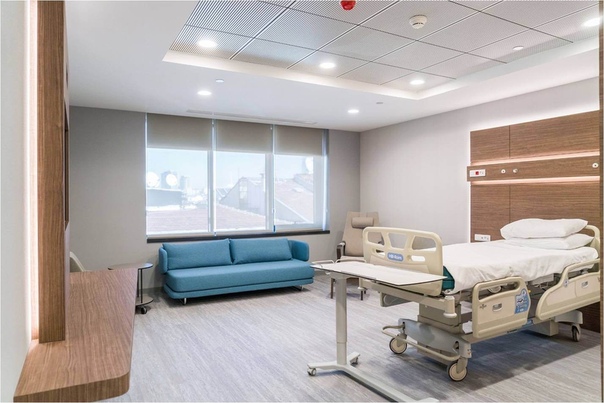
You should get the Shingrix vaccine even if:
- You have had shingles already.
- You have been previously vaccinated with Zostavax (zoster vaccine live). (If you’ve been vaccinated with Zostavax, wait at least 8 weeks before getting vaccinated with Shingrix.)
- You do not know for sure if you’ve ever had chickenpox.
Ask your healthcare provider, who knows your entire health history, if getting this vaccine is right for you.
Who should not be vaccinated with Shingrix?
You should not receive the Shingrix vaccine if you:
- Have ever had a severe allergy to this vaccine or any ingredient in this vaccine.
- Are breastfeeding or pregnant.
- Currently have shingles.
- Are somewhat ill or very ill and have a high fever.
- Have tested negative for immunity to varicella zoster virus (get the chickenpox vaccine instead).
Ask your healthcare provider if the benefits of getting the vaccine outweigh any potential risks.
What serious side effects should I watch for after getting the Shingrix vaccine?
Serious side effects from vaccines are extremely rare. However, call 911 or get to a hospital right away if you experience any of the following within minutes to hours after receiving Shingrix:
- Swelling of the face or throat.
- Difficulty breathing.
- Hives.
- Fast heartbeat.
- Dizziness, lightheadedness, weakness.
If I’ve had shingles recently, how long should I wait before getting the Shingrix vaccine?
You can get the Shingrix vaccine any time after the shingles rash has gone away.
Is the Zostavax vaccine still being used?
Yes. It is still recommended for preventing shingles and postherpetic neuralgia in healthy people age 50 and older. (The CDC, however, recommends Zostavax for adults age 60 and older.) Zostavax is given as a single-dose shot versus the two-dose shot for Shingrix. Zostavax is less effective than Shingrix in preventing shingles (51% vs more than 90%) and postherpetic neuralgia (67% vs more than 90%).
Zostavax can be considered if you are allergic to Shingrix or if Shingrix is unavailable due to supply shortage and you want some immediate protection from a possible case of shingles and/or postherpetic neuralgia. Because it is a weakened live vaccine, it may be dangerous if you have cancer, HIV, or take steroids, chemotherapy or other medications that suppress your immune system. Ask your healthcare provider if the Zostavax vaccine is an option for you.
Do I need to stay away from children, pregnant women, people with cancer or anyone with a weak immune system after I get the Zostavax vaccine?
According to the CDC, it is safe to be around babies and young children, pregnant women or anyone with a weakened immune system after you get the Zostavax vaccine. Even though the Zostavax vaccine contains a weakened live varicella zoster virus, the CDC says there is no documented case of a person getting chickenpox from someone who has received the Zostavax vaccine. (And a person can’t get shingles unless they have already had chickenpox. )
)
If I have previously received the Zostavax vaccine, how long should I wait before getting the Shingrix vaccine?
If you have previously received the Zostavax vaccine, the CDC recommends waiting at least eight weeks before getting the Shingrix vaccine.
If I get the shingles vaccine, does this mean I’m 100% protected from getting shingles?
No, just like most vaccines, getting vaccinated doesn’t provide 100% protection from disease. However, getting the shingles vaccine reduces your risk of developing shingles. Even if you do develop shingles, you’ll be more likely to have a mild case. Also, you’ll be much less likely to develop postherpetic neuralgia, the painful condition that can follow a shingles outbreak.
If I have a medical condition that suppresses my immune system, should I get the shingles vaccine?
Having a weakened immune system can increase the likelihood of getting shingles, so that’s even more of a reason to get the shingles vaccine. However, you must get the Shingrix vaccine, which is not made from a live virus (The older — and still available — vaccine Zostavax is made from a weakened live virus and should not be given to people with weakened immune systems.)
However, you must get the Shingrix vaccine, which is not made from a live virus (The older — and still available — vaccine Zostavax is made from a weakened live virus and should not be given to people with weakened immune systems.)
Outlook / Prognosis
What should I expect will happen to me if I get shingles?
Shingles can be a very painful condition. If you think you have the symptoms of shingles, see your healthcare provider right away. Starting antiviral medications early can ease your discomfort and reduce the duration of your symptoms.
A better approach to shingles is to take action and do what you can to lessen your risk of getting it. If you never had shingles or had a bout of them in the past, talk to your healthcare provider about getting the shingles vaccine. If you’ve never had chickenpox, talk with your healthcare provider about getting the chickenpox vaccine.
Is shingles dangerous or even fatal?
If shingles involves the eye, it can lead to blindness. In rare cases, shingles can lead to hearing problems, pneumonia, inflammation of the brain (encephalitis) and even death.
In rare cases, shingles can lead to hearing problems, pneumonia, inflammation of the brain (encephalitis) and even death.
When is it safe to return to work if I have shingles?
You can return to work when you feel well enough to return AND you are no longer contagious. This means that your blistered rash has dried up and scabbed over. This usually takes up to 10 days from the time the rash first appears.
Living With
Why doesn’t having chickenpox earlier in life provide immunity against having shingles later?
After having chickenpox, your body does not rid your system of the virus. Instead, the virus stays in a portion of the spinal nerve root called the dorsal root ganglion. In most people, the virus simply stays there quietly and doesn’t cause problems. Scientists aren’t always sure why the virus gets active again, but they know stress can be a cause.
If I’ve been vaccinated for chickenpox, can I still develop shingles later in life?
Unfortunately, yes, despite being vaccinated for chickenpox, you can still get shingles. No vaccine is 100% protective and the effects of vaccines lessen with time. However, people who get the chickenpox vaccine are significantly less likely to develop shingles later in life compared with people who never received the chickenpox vaccine. One recent 12-year study found that the number of shingles cases was 72% lower in children who had received the chickenpox vaccine compared with those who did not.
No vaccine is 100% protective and the effects of vaccines lessen with time. However, people who get the chickenpox vaccine are significantly less likely to develop shingles later in life compared with people who never received the chickenpox vaccine. One recent 12-year study found that the number of shingles cases was 72% lower in children who had received the chickenpox vaccine compared with those who did not.
Can I get shingles if I haven’t had chickenpox?
No. You can’t get shingles if you’ve never had chickenpox, but you can get chickenpox from someone who has shingles. If you’ve never had chickenpox and you come into direct contact with the oozing, blister-like rash of someone with shingles, the varicella-zoster virus can infect you and you would develop chickenpox.
Once you’ve had chickenpox, you could develop shingles at some point in your life. This is because the varicella-zoster virus never fully goes away after you’ve had chickenpox. It lies quietly “inactive” in your nerve tissue. Later in life, the virus may become active again and appears as shingles.
Later in life, the virus may become active again and appears as shingles.
If I’ve had chickenpox once in my life can I get it again?
It’s rare to get chickenpox twice in your life. Once you’ve had chickenpox, you’re usually immune to it for the rest of your life. However, it’s not totally impossible. If you have a severely weakened immune system (because you’ve had an organ transplant, HIV, or cancer, for example), you can get chickenpox a second time. If you’ve had chickenpox, you are more likely to get shingles at some point in your life than a repeat bout of chickenpox.
Are there natural ways to boost the immune system to help lessen the chances of developing shingles?
Stress is a risk factor for developing shingles. So limiting your stress can be helpful. Try meditation, yoga or other relaxation methods. Eat healthy, maintain a healthy weight, exercise regularly, get seven to nine hours of sleep each night, don’t smoke – these are all good living tips, not just for reducing your chance of getting shingles, but also many other diseases and health conditions too.
What is the difference between herpes zoster and varicella zoster?
Herpes zoster is simply another medical name for shingles. Varicella zoster is the virus that causes both shingles and chickenpox.
Measles and shingles both produce a rash. Are these diseases related?
Although both diseases produce a rash, measles and shingles are completely different and unrelated diseases. Shingles is caused by the varicella-zoster virus and measles is caused by the rubeola virus.
Shingles | University Hospitals
What is shingles?
Shingles (herpes zoster) is a
common infection of the nerves. It is caused by a virus. Shingles triggers a painful
rash or small blisters on an area of skin. It can appear anywhere on the body, but
it
typically appears on only one side of the face or body. Burning or shooting pain and
tingling or itching are early signs of the infection.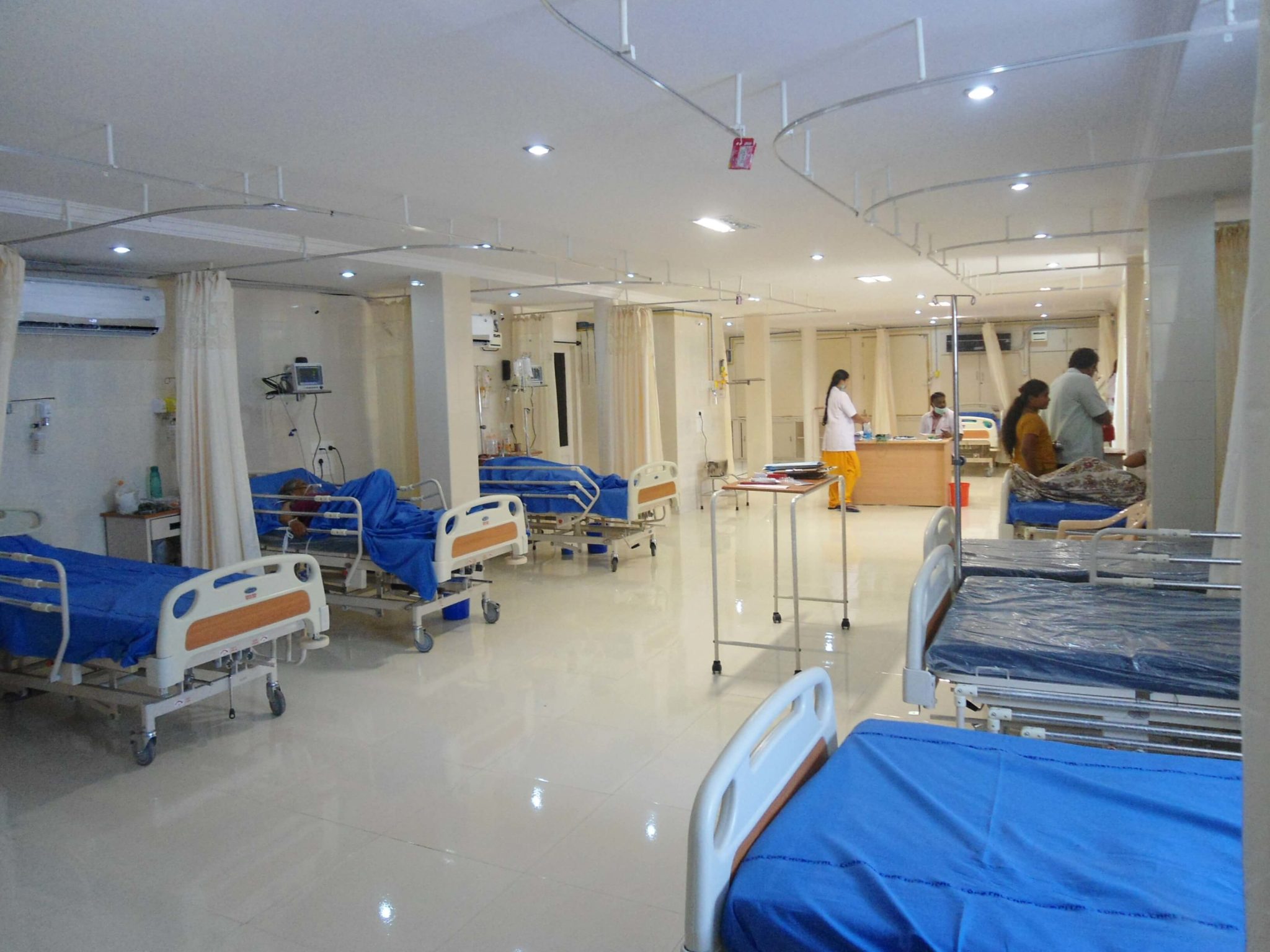 After the rash is gone, the
After the rash is gone, the
pain
usually resolves. But it can continue for months, even years. This is called
postherpetic neuralgia.
What
causes shingles?
Shingles is caused when the
chickenpox virus is reactivated. After a person has had chickenpox, the virus lies
dormant in certain nerves for many years. Shingles is more common in people with a
weak
immune system and in people over age 50. The risk goes up with each decade of life
after
that.
What
are the symptoms of shingles?
Symptoms may include:
- Skin
sensitivity, tingling, itching, or pain in the area of the skin before the rash
appears - Rash, which typically appears 1 to 5
days after symptoms start. At first, the rash looks like small, red spots that turn
At first, the rash looks like small, red spots that turn
into blisters. - Blisters typically scab over in 7 to
10 days and clear up within 2 to 4 weeks.
Other
early symptoms of shingles may include:
- Stomach
upset - Feeling
ill - Fever or
chills - Headache
The
symptoms of shingles may look like other health conditions. Always talk with
your healthcare provider for a diagnosis.
How is shingles diagnosed?
Your healthcare provider will do a
complete physical exam and ask about your health history. Specifically, they will
ask
about whether you have ever had chickenpox.
Your healthcare provider will
likely know right away that it is shingles based on the unique rash. The rash usually
appears in one area on one side of the body or face. It appears as red spots, small,
fluid- or pus-filled vesicles, or scabs.
The
healthcare provider may also take skin scrapings for testing.
How is
shingles treated?
Antiviral medicines may help ease
some of the symptoms of shingles, shorten the course, and lessen the chance of nerve
damage and postherpetic neuralgia. Other treatments focus on pain relief and preventing
infection. Painkillers may help ease some of the pain. Other treatments may include:
- Creams
or lotions to help ease itching - Cool
compresses put on affected skin areas - Antibiotics for the skin (topical) or taken by mouth (oral) or IV (intravenous) if
there are signs of bacterial infection in the involved area - Steroids
- Antidepressants for nerve pain
- Anticonvulsants for nerve pain
What are possible complications of shingles?
Symptoms of shingles usually don’t
last longer than 3 to 5 weeks. But complications can happen. The main complications
But complications can happen. The main complications
that
can result from shingles include:
- Postherpetic neuralgia (PHN). This is the most common
complication of shingles. This continuous, chronic pain lasts even after the skin
sores have healed. The pain may be severe in the area where the blisters were
present. The affected skin may be very sensitive to heat and cold. If you had severe
pain during the active rash or have impaired senses, you are at increased risk for
PHN. Elderly adults are also at greater risk. Early treatment of shingles may prevent
PHN. Pain relievers and steroid treatment may be used to treat the pain and
inflammation. Other treatments include antiviral medicines, antidepressants,
anticonvulsants, and medicines for the skin.
- Bacterial infection. A bacterial infection of the skin
where the rash happens is another complication. Rarely, infections can lead to more
problems, such as tissue death and scarring. - Vision problems. When an infection happens near or on the
eyes, a corneal infection can happen. This can lead to temporary or permanent
blindness.
How can
I help prevent shingles?
The recombinant zoster vaccine
(RZV) vaccine is available to prevent shingles or make it less painful.
Experts recommend the vaccine for
all adults 50 and older, even if you’ve had shingles before. Two doses of the RZV
vaccine are recommended. You should get the second RZV dose 2 to 6 months after the
first. The vaccine makes it less likely that you will develop shingles. If you do
The vaccine makes it less likely that you will develop shingles. If you do
develop shingles, your symptoms will likely be milder than if you hadn’t been
vaccinated. RZV is also advised even if you had the older shingles vaccine (zoster
live
vaccine, ZVL) in the past. That’s because the RZV vaccine works better and protects
you
from shingles longer.
Talk with your healthcare provider
about the best time for you to get vaccinated, along with the benefits and side
effects.
When should I call my healthcare provider?
To
reduce the severity and shorten the length of the illness, treatment must be started
as
soon as possible. If you think you have shingles, call your healthcare provider as
soon
as possible.
Key
points about shingles
- Shingles
is a common viral infection of the nerves. It causes a painful rash or small blisters
on an area of skin. - Shingles is caused when the chickenpox virus is reactivated.
- It is more common in people with a
weak immune system and in people over the age of 50. - Shingles starts with skin sensitivity,
tingling, itching, or pain, followed by a rash that looks like small, red spots that
turn into blisters. - The rash typically affects just one
area on one side of the body or face. - Starting treatment as soon as possible
helps reduce the severity of the disease.
Next steps
- Know the
reason for your visit and what you want to happen.
- Before
your visit, write down questions you want answered. - Bring
someone with you to help you ask questions and remember what your provider tells
you. - At the visit, write down the name of a
new diagnosis and any new medicines, treatments, or tests. Also write down any new
instructions your provider gives you. - Know why a new medicine or treatment
is prescribed and how it will help you. Also know what the side effects are. - Ask if
your condition can be treated in other ways. - Know why
a test or procedure is recommended and what the results could mean. - Know
what to expect if you do not take the medicine or have the test or procedure.
- If you
have a follow-up appointment, write down the date, time, and purpose for that
visit. - Know how you can contact your provider
if you have questions.
Characteristics of patients with shingles admitted to a district general hospital.
Postgrad Med J. 1998 Feb; 74(868): 101–103.
Department of Geriatric Medicine, Arrowe Park Hospital, Wirral, Merseyside, UK.
Abstract
Little is known about why some patients with shingles are admitted to hospital. We reviewed 72 case notes from a list of 80 patients admitted to hospital with shingles over a six-year period. Pain was the main complaint of the patients admitted, most of whom were elderly and lived alone. The commonest site of involvement in hospital admissions was the eye (herpes zoster ophthalmicus). Diagnosis of shingles was made after admission in 12 patients, eight of whom had originally been diagnosed as having an acute medical or surgical condition. We conclude that the prodromal phase of shingles may lead to misdiagnosis.
We conclude that the prodromal phase of shingles may lead to misdiagnosis.
Full text
Full text is available as a scanned copy of the original print version. Get a printable copy (PDF file) of the complete article (766K), or click on a page image below to browse page by page. Links to PubMed are also available for Selected References.
Images in this article
Click on the image to see a larger version.
Selected References
These references are in PubMed. This may not be the complete list of references from this article.
- HOPE-SIMPSON RE. THE NATURE OF HERPES ZOSTER: A LONG-TERM STUDY AND A NEW HYPOTHESIS. Proc R Soc Med. 1965 Jan;58:9–20. [PMC free article] [PubMed] [Google Scholar]
- Rudra T. Zoster sine herpete. Br J Clin Pract. 1990 Jul;44(7):284–285. [PubMed] [Google Scholar]
- Barrett AP, Katelaris CH, Morris JG, Schifter M. Zoster sine herpete of the trigeminal nerve. Oral Surg Oral Med Oral Pathol.
 1993 Feb;75(2):173–175. [PubMed] [Google Scholar]
1993 Feb;75(2):173–175. [PubMed] [Google Scholar] - Wagstaff AJ, Faulds D, Goa KL. Aciclovir. A reappraisal of its antiviral activity, pharmacokinetic properties and therapeutic efficacy. Drugs. 1994 Jan;47(1):153–205. [PubMed] [Google Scholar]
- Hoang-Xuan T, Büchi ER, Herbort CP, Denis J, Frot P, Thénault S, Pouliquen Y. Oral acyclovir for herpes zoster ophthalmicus. Ophthalmology. 1992 Jul;99(7):1062–1071. [PubMed] [Google Scholar]
- Bean B, Braun C, Balfour HH., Jr Acyclovir therapy for acute herpes zoster. Lancet. 1982 Jul 17;2(8290):118–121. [PubMed] [Google Scholar]
Articles from Postgraduate Medical Journal are provided here courtesy of BMJ Publishing Group
Managing Herpes Zoster (Shingles) Exposures in Health Care Settings
Download PDF version formatted for print: Managing Herpes Zoster (Shingles) Exposures in Health Care Settings (PDF)
Control measures for patients with localized rash
- If the patient is immunocompetent and the rash is localized, follow standard precautions and cover all lesions until lesions are dry and crusted.

- If a patient is immunocompromised and the rash is localized, follow standard precautions plus airborne and contact precautions until disseminated infection is ruled out. If dissemination is ruled out, follow standard precautions and cover all lesions until lesions are crusted.
- Only health care workers with adequate evidence of immunity to varicella should care for patients with zoster.
Control measures for patients with disseminated or generalized rash
- If the rash is disseminated (lesions outside the primary or adjacent dermatomes), follow standard precautions plus airborne and contact precaution until the lesions are crusted, regardless of if the patient is immunocompromised or immunocompetent.
- Place patient in negative airflow rooms. If this is unavailable, place patients in their own room and keep the door closed. Those without immunity to varicella should not enter the room.
- Only health care workers with adequate immunity to varicella should care for patients with zoster.

Zoster transmission
Zoster is not spread person to person. However, if someone is not immune to varicella and is exposed to zoster, they may develop varicella disease.
- For localized zoster, transmission occurs through contact with the fluid in the blisters of the rash. A person is not infectious before the blisters appear or after the rash has crusted over.
- For disseminated zoster, transmission occurs through airborne and droplet transmission, in addition to contact with fluid in the blisters of the rash. Disseminated zoster is likely as infectious as varicella.
Management of exposed individuals
Evaluate evidence of immunity to varicella in all individuals exposed to zoster.
- For localized zoster, exposures include those with intimate contact (i.e., changing bandages, touching, hugging). These exposures are usually limited.

- For disseminated zoster, exposures include those in the same 2- to 4- person bed room, adjacent beds in a large area, or face-to-face contact.
Evidence of immunity to varicella includes:
- Documentation of age-appropriate varicella vaccination:
- Children age 12 months to 4 years: 1 dose of varicella vaccine.
- Children age 4 years and older, adolescents, and adults: 2 doses of varicella vaccine.
- Laboratory evidence of immunity or laboratory confirmation of disease.
- Born in the United States before 1980.
- For health care workers, pregnant women, and immunocompromised persons, birth before 1980 should not be considered evidence of immunity.
- Health care provider diagnosis of varicella or zoster or verification of history of varicella or zoster disease. Health care providers should refer to CDC’s Assessing Immunity to Varicella guidance when verifying history of disease in patients.

Exposed individuals
without evidence of immunity should be offered post-exposure prophylaxis in the following situations:
- Healthy individuals age 12 months and older should be given varicella vaccine (as long as it is not contraindicated) within 5 days of exposure.
- The following individuals should receive VariZIG within 10 days of exposure:
- Immunocompromised individuals.
- Pregnant woman.
- Hospitalized preterm infants (28 weeks or more) whose mother lacks evidence of immunity against varicella.
- Hospitalized preterm infants less than 28 weeks of gestation or birthweight of 1000g or less, regardless of maternal immunity.
- It is not indicated for newborn infants whose mother had onset of zoster around delivery to receive VariZIG. This differs from the varicella recommendations.
Management of exposed health care workers
To prevent transmission of varicella in health care facilities, all health care workers should have evidence of immunity to varicella. This information should be documented and readily available. See Ensuring Immunity to Varicella in Health Care Workers for more information. Health care workers exposed to zoster:
This information should be documented and readily available. See Ensuring Immunity to Varicella in Health Care Workers for more information. Health care workers exposed to zoster:
- With adequate evidence of immunity to varicella:
- Should be monitored daily for symptoms of varicella from days 8-21 after exposure.
- With 1 documented dose of varicella vaccine:
- Should receive a second dose of varicella vaccine. Monitor for symptoms of varicella from days 8-21 after exposure.
- Without any documented varicella vaccine:
- Should be furloughed from days 8-21 after exposure or removed from patient care settings during this time. These health care workers should be offered varicella vaccine within 3-5 days after exposure if it is not otherwise contraindicated. Health care workers who are at high risk for severe disease and cannot receive varicella vaccine are recommended to receive VariZIG.

- Should be furloughed from days 8-21 after exposure or removed from patient care settings during this time. These health care workers should be offered varicella vaccine within 3-5 days after exposure if it is not otherwise contraindicated. Health care workers who are at high risk for severe disease and cannot receive varicella vaccine are recommended to receive VariZIG.
What You Need to Know about Shingles
What You Need to Know about Shingles
If you had chickenpox in your childhood, you probably thought you’ve already seen the worst of it. After all, once someone has had chickenpox, a condition caused by the varicella-zoster virus, they will not get chickenpox again.
But now for the sobering fact: if you had chickenpox, you can also get shingles. This is because the chickenpox and shingles are caused by the same varicella virus. Although you may have recovered from chickenpox 60 years ago, the virus always remains dormant in the nervous system and can resurface later in life as shingles.
Can I get shingles?
About one-third of the U.S. population will develop shingles in their lifetime. Shingles can affect anyone who has had chickenpox at any time. However, it is more severe in people who are 60 years and older.
Key Facts
- It is not known what reactivates the virus, so you may develop shingles at anytime.

- The risk of complications rises after 60 years of age.
- Immediate treatment can reduce the pain and the length of time the outbreak lasts.
- Getting vaccinated prevents you from developing the shingles.
If you never had chickenpox, you cannot get shingles. That said, studies show that more than 99% of Americans aged 40 and older have had chickenpox, even if they don’t remember getting the disease.
How do I know if I have the shingles and what should I do?
“Shingles is a reactivated virus which often causes pain and skin lesions,” says Asfana Alam, DO, MPH, a family medicine doctor at NewYork-Presbyterian Medical Group Hudson Valley. The rash usually presents on one side of the body with an eruption of little blisters called vesicles, which causes fever and inflammation.
Symptoms include:
- Rash consisting of blisters
- Headache
- Fever
- Chills
- Nausea
“If shingles is caught early—within the first 72 hours of the rash, we can treat it with anti-viral medication,” says Dr. Alam. “Without treatment, the rash usually goes away within two weeks. But, some people develop a condition called called postherpetic neuralgia — a persistent pain in the area of the rash even after it has cleared up — which can last for months and, in rare cases, years,” Dr. Alam says.
Alam. “Without treatment, the rash usually goes away within two weeks. But, some people develop a condition called called postherpetic neuralgia — a persistent pain in the area of the rash even after it has cleared up — which can last for months and, in rare cases, years,” Dr. Alam says.
Shingles can only be spread to someone who never had chickenpox – and it actually causes chickenpox, not shingles. However, the only way it is spread is through direct contact with the fluid from the blistery rashes.
Fortunately, medications are available that can both shorten the duration of the rash and decrease the likelihood of postherpetic neuralgia if given quickly.
Get the vaccine
The Centers for Disease Control and Prevention (CDC) recommend everyone 50 and older get the vaccine whether or not they recall having had chickenpox. There are two vaccine options — Shingrix and Zostavax.
Shingrix is the recommended vaccine by the CDC. However, both vaccines are approved for the prevention of shingles. Although recurrence of shingles is uncommon, if you had the outbreak, you should still receive the vaccine to help prevent new outbreaks. Please note that even if you get the vaccine, it is possible that you can still get shingles, though it will be milder.
Although recurrence of shingles is uncommon, if you had the outbreak, you should still receive the vaccine to help prevent new outbreaks. Please note that even if you get the vaccine, it is possible that you can still get shingles, though it will be milder.
If you are 50 or older, schedule an appointment to get the shingles vaccine today. Dr. Asfana Alam is a Family Medicine Physician practicing with NewYork-Presbyterian Medical Group Hudson Valley in Cold Spring. To make an appointment, call 914-233-3022.
At NewYork-Presbyterian Medical Group Hudson Valley, our doctors include primary care, OB/GYN, cardiology, orthopedics and more, and offer same-day, early, late and weekend appointments. To find a physician close to home, search here or or call 914-787-2200.
Shingles Loyola Medicine, Maywood, IL
Overview and Facts about Shingles
Shingles is a painful rash that can develop when you contract the varicella-zoster virus. This rash can spread throughout your body, but most often it develops on either the right or left side of your chest and belly.
The varicella-zoster virus is the same virus that causes chickenpox, which is why it is common for people who have had this illness in childhood to eventually develop shingles.
The chickenpox virus stays inactive in your body but can later become active and cause a shingles infection.
Symptoms
Signs and Symptoms of Shingles
Usually, the telltale shingles rash only affects a part of your body, typically on the left or right side. You may also experience:
- Blisters that are filled with fluid, which can burst and become crusty
- Itchiness
- Pain, tingling or numbness
- Redness
Along with the rash, you might also feel tired or have a sensitivity to light. Some people also get a fever or a headache, but this is not common.
Causes and Risk Factors of Shingles
The varicella-zoster virus causes shingles, which means a person usually has chickenpox before they get shingles.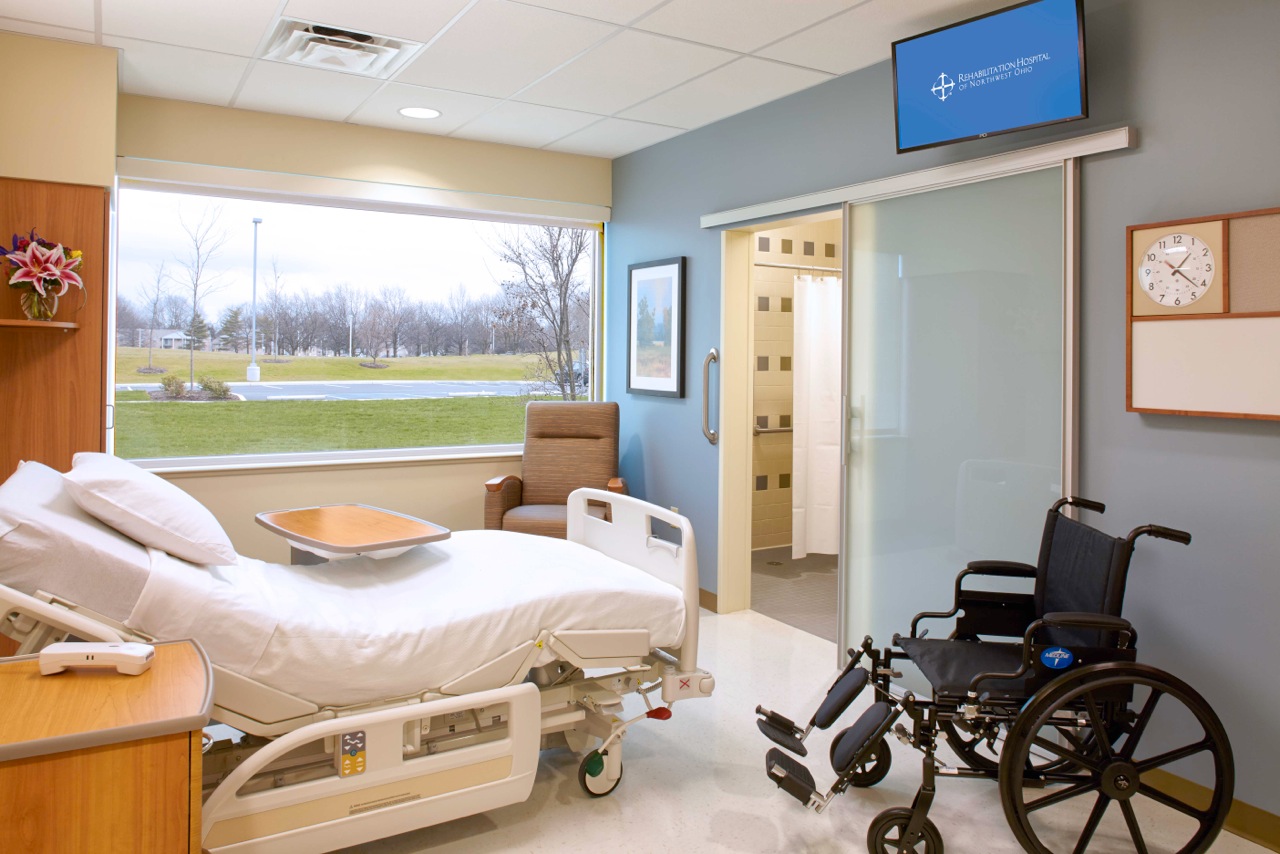
After the chickenpox infection, the varicella-zoster virus stays dormant in the body, eventually reactivating along nerve pathways to cause shingles.
There are some risk factors for shingles. These include:
- Being over the age of 50
- Getting cancer treatment
- Having diseases that weakened the immune system, such as cancer or HIV/AIDS
- Not having the chickenpox vaccine
- Taking medications for organ transplants
Tests and Diagnosis of Shingles
Because shingles have an easily verifiable cause, most dermatologists are able to diagnose this infection through a basic physical exam.
At your appointment, the doctor will exam your rash, ask about your pain, other symptoms and whether you’ve had chickenpox in the past.
If your symptoms aren’t conclusive or you never had chickenpox, your doctor may take a tissue scraping to look at the cells in a lab before making a diagnosis.
Treatment and Care of Shingles
There’s no cure for shingles, meaning you will have to wait until the infection goes away. Most cases of shingles last about two to six weeks.
Most cases of shingles last about two to six weeks.
To help make your symptoms more tolerable and speed up healing, your doctor may prescribe antiviral drugs like acyclovir or valacyclovir. They may also recommend:
- Corticosteroids to help with healing
- Local anesthetics to numb the area
- Numbing patches, sprays, gels or creams for temporary pain relief
- Pain medications to reduce the sensation
90,000 Herpes zoster, symptoms and treatment of herpes zoster in the clinic InTime
Fast recovery with timely referral to a specialist
Herpes zoster (shingles) results from the reactivation of the Varicella Zoster virus. The disease is characterized by rashes on the skin and burning pains in the places of the affected nerve endings. Carriers of this virus are about 20% of all people who have had chickenpox in childhood. Under normal conditions, the virus does not manifest itself in any way, but under the influence of factors that weaken the immune system, it can be activated.
InTime clinic successfully treats herpes zoster using modern techniques and the latest equipment (laser “MILTA-K”, ozonator “Medozons BM”). Experienced dermatologists of the clinic accurately diagnose the disease and prescribe effective complex treatment (medication, laser therapy, physiotherapy, etc.).
Laboratory tests may be needed to detect herpes zoster virus in the early stages. All studies are carried out in our clinic’s own laboratory using the latest analytical equipment.You can rest assured that you will receive reliable test results.
Sign up for a consultation in advance by phone and visit a doctor at a convenient time for you.
Send application
for a free consultation
We provide the first free consultation for new patients.
Just leave your contact details and we will contact
with you during the working day.
If you have already been our client, you can
use this form to order a call back.
Thank you!
Your application has been accepted.
We will contact you within one business day.
Several reasons to contact our clinic
The best specialists
Dermatologists of the highest category work in our clinic.Our specialists include doctors of medical sciences, academicians and professors. Doctors of the InTime clinic have extensive experience in leading medical centers in Russia and abroad, constantly improve their qualifications, take part in international and All-Russian conferences.
Own laboratory
You can undergo all the necessary tests in our clinic. The laboratory of the clinic “InTime” is equipped with automatic analyzers of the latest generation. Thanks to constant internal laboratory quality control at all stages of research, you can be sure of the reliability of the results.
The laboratory of the clinic “InTime” is equipped with automatic analyzers of the latest generation. Thanks to constant internal laboratory quality control at all stages of research, you can be sure of the reliability of the results.
Safe Techniques
We carry out effective treatment of herpes zoster on the body, using progressive safe methods. The clinic “InTime” successfully carries out drug treatment, uses laser therapy (laser complex “MILTA-K”), ozone therapy (ozonator “Medozons BM”) and other sparing methods.
Transport accessibility
You can reach us both by car and public transport. Clinic “InTime” is located in the area of the Third Transport Ring, and the metro stations Park Kultury, Sportivnaya and Frunzenskaya are located nearby.
Causes, symptoms and treatment of herpes zoster
The cause of herpes zoster is Varicella Zoster virus. This virus settles in nerve cells and may not manifest itself until the end of life. But if external or internal factors provoke its activation, the disease will manifest itself in the form of rashes on the skin in the places of the affected nerve endings.
But if external or internal factors provoke its activation, the disease will manifest itself in the form of rashes on the skin in the places of the affected nerve endings.
The first symptoms of herpes zoster are very similar to the flu. The patient complains of headache and general weakness, lymph nodes enlarge and body temperature rises.A characteristic symptom of herpes zoster is a burning pain in the places of future rashes. A rash then appears, which is later replaced by fluid-filled blisters.
Treatment of herpes zoster must necessarily be supervised by a qualified dermatologist. Only a specialist after a thorough diagnosis will be able to choose the optimal treatment package.
A question that worries patients who have been diagnosed with herpes zoster – is it contagious? This virus is transmitted by contact with the contents of the vesicles on the patient’s body and through the air.But not in all cases, contact with a sick person leads to illness. In particular, there are practically no cases of re-infection.
In particular, there are practically no cases of re-infection.
We care about your health!
If the disease is left untreated, the consequences of herpes zoster can be very serious. Therefore, at the first symptoms of the disease, contact the clinic “InTime” – we will return your health!
Treatment of neuropathic pain syndrome with shingles on an outpatient basis
Shurkalin K.A.
Shingles (OB) is an infectious viral disease caused by the Varicella Zoster virus. The virus is also the causative agent of chickenpox. The occurrence of OB is due to the reactivation of a latent virus in the body after chickenpox suffered in childhood. Virus reactivation is facilitated by various factors that reduce the body’s immunological reactivity (old age, hypothermia, malignant tumors, etc.). In the nervous system, the virus infects the spinal and cerebral ganglia, in severe cases, the anterior and posterior horns of the spinal cord and the brain. Pathohistologically, inflammatory infiltration develops in these parts of the nervous system, hemorrhages are noted, followed by dystrophy of nerve fibers.
Pathohistologically, inflammatory infiltration develops in these parts of the nervous system, hemorrhages are noted, followed by dystrophy of nerve fibers.
One of the main clinical symptoms of OB is neuropathic pain syndrome. In this case, pain usually occurs earlier than other manifestations of the disease and can remain for a long time (months and years) after the healing of rashes on the skin and mucous membranes (postherpetic neuralgia). Thus, pain management is an important clinical task, the success of which determines the patient’s quality of life.
We have analyzed the case histories of 34 patients with neuropathic pain syndrome in OB who were treated in the Central Polyclinic of Russian Railways. The analysis of the features of treatment measures allowed us to formulate our point of view on the principles of treatment of such patients. The average age of the patients was 48.6 years, there was a predominance of women over men (22 versus 12). The average age of the disease at the time of the initial examination was 6. 5 days. In 4 patients, a recurrent course of the disease was noted, i.e.That is, by the time of the initial examination, they already had at least 1 case of OB in the anamnesis. All patients received some form of analgesic therapy.
5 days. In 4 patients, a recurrent course of the disease was noted, i.e.That is, by the time of the initial examination, they already had at least 1 case of OB in the anamnesis. All patients received some form of analgesic therapy.
As is known, the following groups of pharmaceuticals are used to treat neuropathic pain:
- anticonvulsants;
- antidepressants;
- narcotic analgesics.
90,073 local anesthetics;
The table below shows the number of patients who received one or another type of pharmacotherapy.Please note that one patient could receive several drugs at the same time.
| Preparations | Number | % of total |
| NSAID monotherapy | 2 | 5.9 |
| Anticonvulsant monotherapy | 12 | 35.3 |
| Anticonvulsant + antidepressant | 11 | 32. 3 3 |
| Anticonvulsant + antidepressant + anesthetic | 7 | 20.6 |
| Four-drug combination | 2 | 5.9 |
| Total | 34 | 100 |
Drugs from the group of non-steroidal analgesics are not usually recommended for neuropathic pain syndrome.Nevertheless, we thought it expedient to prescribe monotherapy with such a drug in two cases of low intensity of pain syndrome. In both patients, the result was good, the duration of taking the drugs (respectively Celebrex 400 mg / day and Arcoxia 90 mg / day) was no more than 7 days.
The most frequently prescribed group of drugs were anticonvulsants, which were received by 32 patients, including 12 as monotherapy, and the rest – in combination with drugs from other groups.Most often, the drug finlepsin (carbamazepine) was prescribed, the positive properties of which are good efficacy, great therapeutic breadth, inexpensive price, the presence of retard forms of tablets, allowing it to be taken once a day. However, the drug often causes dizziness, which forced us in 2 patients to replace it with another agent of this group, usually Neurontin or lyric poetry. Neurontin (gabapentin) is slightly better tolerated, however, its widespread use is inhibited by the need for three times use and a high price, so it was prescribed to only 1 patient, and there were no complaints about the effectiveness of the drug.Lyrica (pregabalin) is better tolerated, cheaper price, two-time admission and simpler dosage regimen, so this drug was taken by 8 patients. The usual doses of such drugs were: finlepsin 300-400 mg / day, Neurontin – 900 mg / day, lyric 150 mg / day. The duration of admission was from 7 to 30 days.
However, the drug often causes dizziness, which forced us in 2 patients to replace it with another agent of this group, usually Neurontin or lyric poetry. Neurontin (gabapentin) is slightly better tolerated, however, its widespread use is inhibited by the need for three times use and a high price, so it was prescribed to only 1 patient, and there were no complaints about the effectiveness of the drug.Lyrica (pregabalin) is better tolerated, cheaper price, two-time admission and simpler dosage regimen, so this drug was taken by 8 patients. The usual doses of such drugs were: finlepsin 300-400 mg / day, Neurontin – 900 mg / day, lyric 150 mg / day. The duration of admission was from 7 to 30 days.
In 20 cases, a combination of anticonvulsants with other drugs was used. We often combined them with the antidepressant amitriptyline.The choice of this drug was associated with good efficacy, availability of the drug, as well as the presence of a sedative effect, which makes it possible to prescribe it for pain insomnia./GettyImages-559537341-58ecea983df78c5162b1cc82.jpg) Therefore, the drug was prescribed once at night at a dose of 12.5-25 mg. The drug was not prescribed as monotherapy, as this would require a significantly higher dose, causing excessive sedation. In addition, it is necessary to remember about the anticholinergic action of the drug, which makes it contraindicated in glaucoma, urinary tract obstruction, tachyarrhythmias.
Therefore, the drug was prescribed once at night at a dose of 12.5-25 mg. The drug was not prescribed as monotherapy, as this would require a significantly higher dose, causing excessive sedation. In addition, it is necessary to remember about the anticholinergic action of the drug, which makes it contraindicated in glaucoma, urinary tract obstruction, tachyarrhythmias.
We referred to the drugs from the group of local anesthetics as a patch drug – versatis with lidocaine. A similar combination was found in 7 of our patients. However, this drug is not applicable in the acute period of the disease (due to the presence of skin rashes), as well as with intolerance to lidocaine. In addition, in our experience, the drug is suitable only as a component of therapy, all attempts to prescribe it as a monotherapy have given disappointing results, in no case have a satisfactory effect been achieved.The drug is applied to the affected segment for 12 hours.
As for narcotic analgesics, this type of treatment can be used only in particularly stubborn cases, and then only in the form of a short course for the period of maximum severity of pain.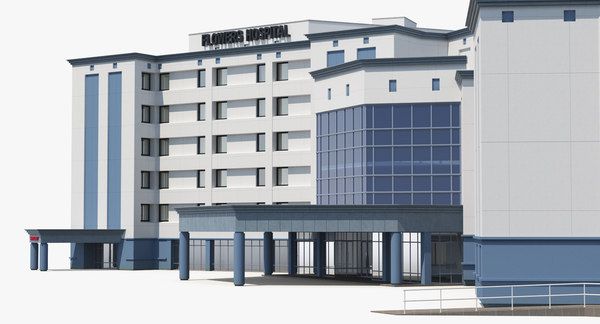 In 2 cases we used tramadol in the form of zaldiar, the duration of administration in each case did not exceed 5 days, after which we switched to taking anticonvulsants and antidepressants in effective doses, supplementing the therapy with Versatis applications.
In 2 cases we used tramadol in the form of zaldiar, the duration of administration in each case did not exceed 5 days, after which we switched to taking anticonvulsants and antidepressants in effective doses, supplementing the therapy with Versatis applications.
Thus, anticonvulsant drugs, finlepsin or lyrica are the drugs of choice for the treatment of pain syndrome in obesity. In some cases, they can provide a good clinical effect in monotherapy, however, they can be combined with amitriptyline (especially in the presence of painful insomnia), as well as versatis. In especially severe cases, a short course of zaldiar can be used. The use of rational analgesic therapy allows in the overwhelming majority of cases to achieve a good therapeutic effect in the shortest possible time and prevent the development of postherpetic neuralgia.
90,000 treatment and diagnosis of causes, symptoms in Moscow
Description and causes of postherpetic pain
Postherpetic pain (or postherpetic neuralgia) results from a previous herpes zoster infection.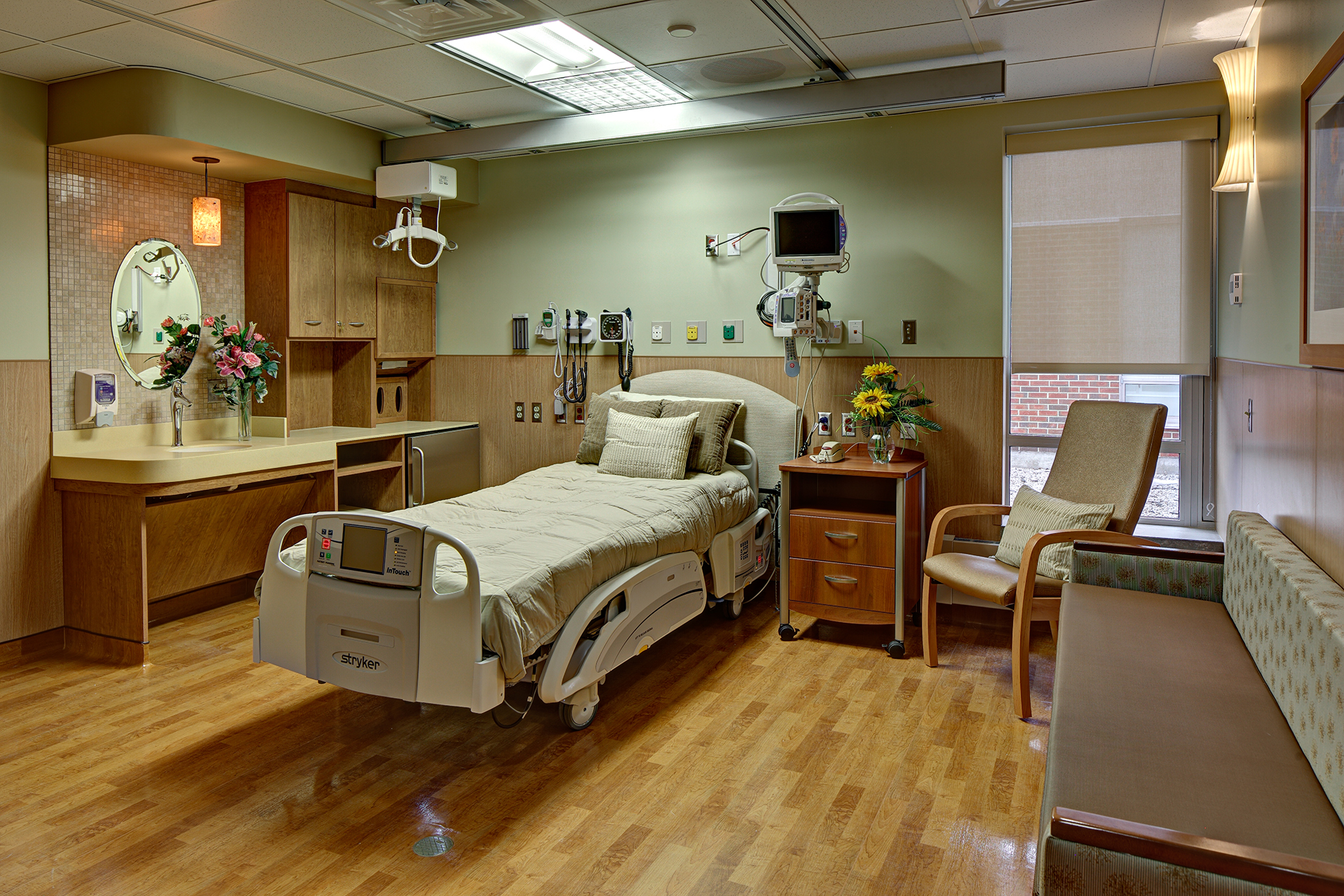 When the virus enters the body for the first time, it causes chickenpox, but after recovery does not disappear, but circulates in the body for life and can be reactivated when immunity is weakened (HIV infection, taking immunosuppressants, aging of the body).
When the virus enters the body for the first time, it causes chickenpox, but after recovery does not disappear, but circulates in the body for life and can be reactivated when immunity is weakened (HIV infection, taking immunosuppressants, aging of the body).
Irus affects the spinal ganglia and cranial nerves. Clinically, the disease manifests itself as pain along the affected dermatome (an area of the skin innervated by an infected nerve), impaired sensitivity, vesicular rashes on an erythematous background. Most often, the pain goes away after the disease subsides, but in some cases it persists.
Pain can be of a different nature:
- constant, not subsiding, burning, pulling, pressing,
- “shooting”,
- Burning sensation when touching the affected area.
Pain diagnosis
The diagnosis of postherpetic neuralgia is made on the basis of patient complaints, history and clinical presentation. For confirmation, PCR is performed to detect the DNA of the herpes virus.
Treatment of pain in postherpetic neuralgia is carried out in the following areas:
Pain in postherpetic neuralgia is exhausting for patients and reduces the quality of life. Long-term pain syndrome causes depression, anxiety, decreased concentration, weight loss, and limited physical and social activity.It is necessary not to endure pain, but to treat it promptly and effectively.
Treatment of postherpetic neuralgia is carried out in the following areas:
- conservative therapy (administration of general and local drugs)
- invasive methods (epidural blockade, radiofrequency denervation (RFD) of the spinal root)
- auxiliary methods (physiotherapy exercises, physiotherapy, manual therapy)
Conservative therapy
For each patient, an individual scheme of analgesic therapy is selected, based on the causes of the disease, the characteristics of the pain syndrome, possible contraindications and drug interactions. Throughout the treatment, the conservative therapy regimen is adjusted depending on the clinical situation.
Throughout the treatment, the conservative therapy regimen is adjusted depending on the clinical situation.
The most commonly used lidocaine patches provide a long-term uniform flow of anesthetic into the pain site. Also, patches are used with capsaicin, a substance obtained from hot peppers that blocks pain receptors for up to three months after one application.
Of the drugs for systemic exposure, anticonvulsants and antidepressants are used.These drugs can block the conduction of the pain impulse or reduce the perception of pain in the brain. The substances have many side effects and their use must be strictly regulated by a doctor. In difficult cases, narcotic analgesics are prescribed.
Invasive methods
Epidural blockade
Anesthetic is injected into the space above the dura mater of the spinal cord. There is a blockage of a nerve impulse along the roots of the spinal cord.The blockade not only relieves pain, but also helps to relax muscles, normalize blood flow and improve tissue trophism.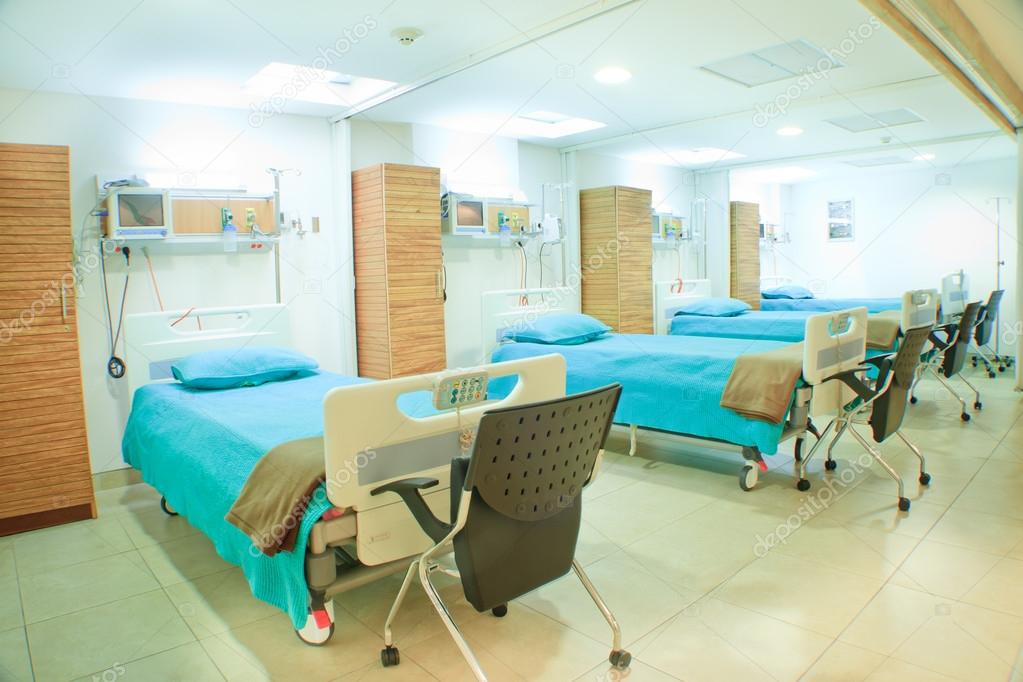
Radiofrequency denervation (RFD) of the spinal root
Radiofrequency denervation (RFD) is a modern and safe non-surgical method suitable for patients for whom other methods of treatment are ineffective or impossible.
This technique is used when conservative drug therapy is ineffective – when painkillers, even the most powerful ones, do not help enough or cannot be prescribed due to side effects.
How is radiofrequency denervation of the spinal root performed
After a standard examination by a specialist algologist, additional examination and diagnostics, if necessary, a decision is made to carry out radiofrequency denervation.
- The procedure is performed on an outpatient basis. Under sterile conditions, the doctor, under X-ray control, inserts special needles into the posterior (sensitive) region of the spinal root. After the doctor makes sure that the tip of the needle is exactly in the right place, a local anesthetic is injected so that the denervation is painless.
 After that, a thin electrode is inserted through the channel of the needle, which is connected to a radio frequency generator and the tip of the needle is heated to a predetermined temperature. The patient, as a rule, does not experience any discomfort, the most painful moment of the procedure is the usual injection.
After that, a thin electrode is inserted through the channel of the needle, which is connected to a radio frequency generator and the tip of the needle is heated to a predetermined temperature. The patient, as a rule, does not experience any discomfort, the most painful moment of the procedure is the usual injection. - In some cases, a diagnostic and treatment block is first performed in order to determine how effective the technique will be for a given case. Under sterile conditions, under the control of the X-ray system, the needles are precisely set to the spinal root.To reduce discomfort, all manipulations are performed using local anesthesia. After installing the needles, a small amount of anesthetic is injected, interrupting the pain impulse from the affected area.
Department of Immunopathology No. 2
Department doctors
Department of Immunopathology was established in 1980. The department employs two doctors of sciences, seven candidates of medical sciences and doctors-allergists-immunologists. The departments are headed by the Honored Doctor of the Russian Federation, Professor, Dr.MD, doctor of the highest category Tatyana Vasilievna Latysheva. Author of over 250 scientific papers.
The departments are headed by the Honored Doctor of the Russian Federation, Professor, Dr.MD, doctor of the highest category Tatyana Vasilievna Latysheva. Author of over 250 scientific papers.
Consultative and medical work in the department is carried out in the following areas:
- Diagnostics, treatment and rehabilitation of patients with primary disorders in the immune system (primary immunodeficiencies).
- Treatment of secondary immune deficiency in adults and children, developed against the background of various somatic diseases (chronic viral-bacterial and fungal infections, autoimmune diseases, bronchial asthma, diabetes mellitus, etc.)etc.).
- Examination and treatment of patients with recurrent viral infections (herpes, cytomegalovirus, Epstein-Bar virus, herpes zoster).
- Selection of immunocorrective therapy in patients with impaired immunity due to immunosuppressive therapy (chemotherapy, radiation therapy, cytostatic and glucocorticosteroid therapy, etc.
 ).
). - Individual selection of immunotropic drugs in patients with primary immunodeficiency and secondary immune deficiency syndrome.
- Diagnostics and treatment of drug intolerance, individual selection of drugs.
- Diagnostics and treatment of allergic diseases (hay fever, bronchial asthma, allergic dermatoses, toxic-allergic reactions, etc.).
- Specific immunotherapy for allergic diseases (allergic rhinitis, conjunctivitis, bronchial asthma, atopic dermatitis).
- Diagnosis and treatment of skin diseases (pyoderma, recurrent furunculosis, eczema, rosacea, bullous dermatoses, dermatomycosis, etc.).
- Extracorporeal methods of treatment (plasmapheresis, extracorporeal immunopharmacotherapy), oxygen therapy, hydrocolonotherapy, laser therapy, etc.
Treatment of shingles in the clinic of dermatology
Shingles is a viral disease characterized by unilateral herpetiformis rash on the skin with severe pain syndrome. The causative agent is the varicella-zoster virus.
Attention! The Clinic of Dermatology in Moscow warns: the disease is contagious!
The ganglionic form of the disease is the most common.External manifestation, as a rule, is preceded by general malaise, fever, fever, itching.
Then the next phase of the disease follows: pink spots appear on the skin, on which small vesicular formations later appear. The most common localization: the lumbar and chest area. The rash is shingles. If you do not contact the dermatological center in Moscow in time, the disease can acquire a local character.
For some time, the bubbles burst, forming dried crusts in their place.Thus, the rash disappears on its own within a few weeks, leaving little pigmentation. It is worth noting that this disease is characterized by the appearance of pain, which sometimes becomes unbearable and increases with movement, as well as with the slightest touch to the skin.
Latent course of the disease
So, the causative agent of shingles is a virus. Having penetrated the body, he can live there quietly for several years, without showing himself in any way. During this latent period, it is localized in the posterior roots of the spinal cord and intervertebral nerve nodes.Its activation is facilitated by a strong decrease in immunity resulting from severe diseases (HIV, oncology, lymphogranulomatosis, leukemia, etc.). An experienced dermatologist-venereologist can confirm to you that old age is also a factor activating the disease. What is the main danger of the latency period? With this course of the disease, severe intoxication of the body and the appearance of neuralgic pains against the background of the absence of skin rashes are possible. A person begins to be treated for other diseases, and the virus continues to destroy the body from the inside.As a rule, pains become less intense when the rash appears.
Having penetrated the body, he can live there quietly for several years, without showing himself in any way. During this latent period, it is localized in the posterior roots of the spinal cord and intervertebral nerve nodes.Its activation is facilitated by a strong decrease in immunity resulting from severe diseases (HIV, oncology, lymphogranulomatosis, leukemia, etc.). An experienced dermatologist-venereologist can confirm to you that old age is also a factor activating the disease. What is the main danger of the latency period? With this course of the disease, severe intoxication of the body and the appearance of neuralgic pains against the background of the absence of skin rashes are possible. A person begins to be treated for other diseases, and the virus continues to destroy the body from the inside.As a rule, pains become less intense when the rash appears.
Causes of the disease:
- chickenpox virus
Provoking factors:
- weakened immunity
- old age
- chemotherapy
Treatment of herpes zoster
Treatment is primarily aimed at eliminating intoxication and preventing neuralgic pain (spread) infection in the body.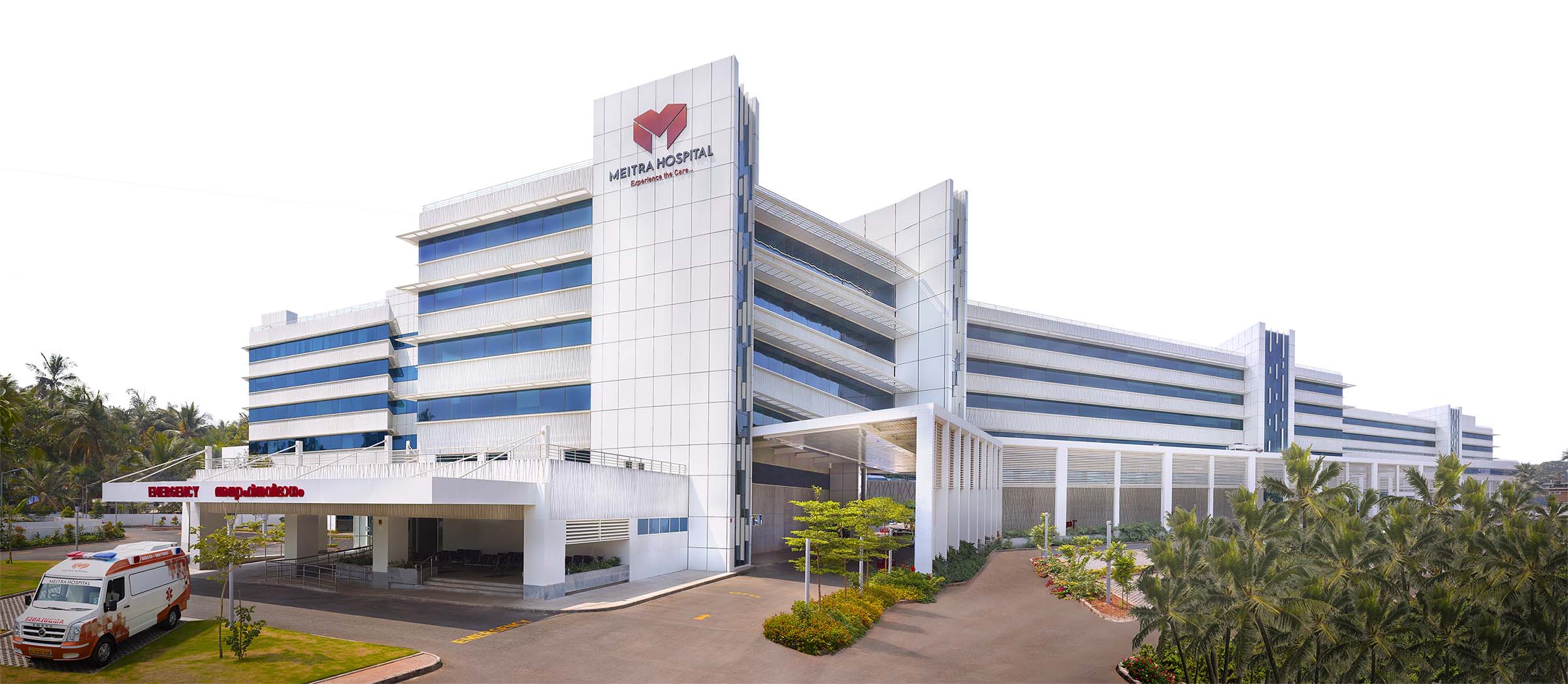 It is assigned strictly individually, depending on the degree of damage.In the clinic of dermatology in Moscow, patients are offered modern and effective treatment: intravenous injections, antiviral, analgesic and immunostimulating drugs, topical ointments and creams can be prescribed. In addition, supportive treatment is also possible, which restores the body’s work. These are laser therapy, plasmapheresis, etc. Since this disease is fraught with serious complications, treatment should only be carried out by dermatologists!
It is assigned strictly individually, depending on the degree of damage.In the clinic of dermatology in Moscow, patients are offered modern and effective treatment: intravenous injections, antiviral, analgesic and immunostimulating drugs, topical ointments and creams can be prescribed. In addition, supportive treatment is also possible, which restores the body’s work. These are laser therapy, plasmapheresis, etc. Since this disease is fraught with serious complications, treatment should only be carried out by dermatologists!
With a timely visit to a doctor, the prognosis is usually favorable.
Are you worried about skin rashes? Are you looking for a good dermatology clinic in Moscow? Make an appointment with us – the dermatological center in Moscow “MedCenterService” is glad to provide you with highly qualified assistance at any time of the day or night! A highly qualified, responsible and sensitive dermatologist-venereologist will examine you, advise, diagnose and provide the necessary assistance.
Treatment of shingles in Zaporozhye
Shingles is a contagious disease of viral origin.It occurs in people of all age groups of both sexes. However, most often the disease is diagnosed in elderly people.
SIGNS OF SINGLE-SHEAR
The onset of the disease is difficult to diagnose due to the manifestation of symptoms common to most diseases – fever, malaise, migraine attacks, chills and lethargy.
At the same time, uncomfortable sensations begin to appear in the area of future lichen rash. Following these sensations, itching and pain begins to appear.
After 3-4 days, lichen formations appear in these places of the skin – in the form of a pink rash that forms local affected areas. Over time, the rash takes the form of small blisters filled with a clear liquid, which begins to grow cloudy after a few days.
Over time, the bubbles begin to dry out, the soreness decreases. At the site of the lesion, a scar or light skin area is formed with traces of protruding plaques.
Rash lesions common for shingles are the chest area, in the intercostal space, as well as the face and limbs.The rashes are very painful until they are completely cured.
ORIGIN OF THE DISEASE
The disease can start suddenly, when the pathogen appears in the blood – the Zoster virus, also known as the causative agent of chickenpox. Therefore, the course and signs of these two diseases have certain similarities.
In many cases, a person infected with this virus does not feel the signs of the disease, remaining the carrier of the virus for many years. The manifestation of herpes zoster is facilitated by various factors against the background of a decrease in immunity:
- consequences of therapeutic radiation;
- Frequent stress and chronic fatigue;
- diseases of an oncological nature.
Often a concomitant factor is the use of hormonal medications, as well as immunosuppressants.
DIAGNOSTICS AND TREATMENT OF SHINOSE
Only an experienced dermatologist can make an accurate diagnosis. Confirmation of the diagnosis is carried out on the basis of a clinical examination, if necessary, taking into account the results of laboratory blood tests.
Confirmation of the diagnosis is carried out on the basis of a clinical examination, if necessary, taking into account the results of laboratory blood tests.
The course of treatment must also be prescribed by the attending dermatologist. Due to the particular pain during the course of the disease, it is recommended to avoid untested methods.
The disease lasts from 15 to 30 days with a sufficiently stable immune system. If health is weakened by concomitant diseases, and in some cases – when the disease develops in the elderly, shingles can last for several more weeks.
As therapeutic agents, a dermatologist can prescribe, depending on the degree of damage, the severity of the disease and taking into account the individual characteristics of the body, drugs with anesthetic action, hypnotics, sedative drugs.
To get rid of shingles, you can make an appointment with a dermatologist by phone: 233 7 233, (095) 238 3 238, (096) 2 38 3 238.
Postherpetic neuralgia – you can whether to cure? How to relieve pain?
Postherpetic neuralgia (PHN) is a complication of herpes zoster caused by the same virus as chickenpox (lat.herpes zoster virus). In this disease, the skin and nerve fibers are affected, which is manifested by severe burning pain after the healing of herpetic blisters.
The risk of postherpetic neuralgia increases with age; most often people over 60 years old are susceptible to this disease. This condition occurs in about 10–20% of patients who have had herpes zoster. It cannot be cured, but treating postherpetic neuralgia can relieve symptoms and pain. In more than half of patients, pain disappears on its own after a while.
Symptoms of postherpetic neuralgia, as a rule, are limited to the area of the skin where the rash first appeared – most often they encircle the trunk or appear on the side, although the disease can also affect the face.
Painful sensations can last for 3 months or longer after healing of herpes blisters. Patients describe it as burning, sharp, piercing or deep, and it occurs even with the slightest touch of the skin in the affected area, including from a light touch of clothing (allodynia). Much less often, patients feel itching and numbness.
Causes of postherpetic neuralgia
After a person has transferred chickenpox, the virus remains in the body for life.As we age, the immune system weakens (in particular, from medication or chemotherapy) and the virus can become active, resulting in shingles.
Damage to nerve endings during rashes leads to postherpetic neuralgia. When damaged, nerve fibers cannot send signals from the skin to the brain the way they normally do. Instead, they transmit amplified signals, and the patient feels excruciating pain that can last for months or even years.
Risk factors
If you develop signs of herpes zoster, the risk of postherpetic neuralgia is greatly increased under the following conditions:
90,072 90,073 age over 50;

Complications
With a long course of the disease, especially if it is accompanied by a very severe pain syndrome, patients often have the following complications:
- depression;
- fatigue;
- difficulty concentrating.
90,073 sleep disorders;
90,073 loss of appetite;
Treatment methods
It is impossible to give an unambiguous answer to the question of how to treat postherpetic neuralgia, since there is no universal treatment for this disease that would suit all patients. It usually requires a painstaking selection of drugs and techniques (and sometimes a combination) in order to relieve the patient’s pain.
Lidocaine plasters
These are patches containing the local anesthetic lidocaine.They should be glued to the affected area of the skin. Due to the constant, even release of the anesthetic, these patches provide temporary relief by reducing pain and giving respite.
Patches with a high content of capsaicin
This is a modern method of pain relief for postgrapetic neuralgia, which consists in the following: the substance contained in the patch is a derivative of hot pepper, which blocks the pain receptors of the skin. The application of such a patch can only be carried out by a doctor.The procedure takes 2 hours, but its good analgesic effect is prolonged and can last up to 3 months. If necessary, the procedure is repeated.
Drug therapy
Drug therapy involves the use of the following groups of drugs:
- Anticonvulsants (Lyrica, Neurontin, others). These drugs have shown good efficacy for neuropathic pain. However, they have a number of side effects, the most common of which are decreased concentration, drowsiness and swelling of the legs;
- Antidepressants.Some antidepressants (“Amitriptyline”, “Duloxetine”) affect the production of special substances in the brain, which are responsible for both depression and pain perception.
 Doctors often prescribe minimal doses of antidepressants in the treatment of postherpetic neuralgia. Their main side effects include: drowsiness, dry mouth, dizziness;
Doctors often prescribe minimal doses of antidepressants in the treatment of postherpetic neuralgia. Their main side effects include: drowsiness, dry mouth, dizziness; - In case of severe pain syndrome and insufficient effectiveness of other drugs, narcotic analgesics can be prescribed to patients.
Epidural administration of anesthetics and steroid hormones
Epidural blockade of the spine involves the introduction of drugs into the epidural space, which leads to a loss of sensitivity in the affected area. This means that this procedure involves the introduction of the active substance directly into the source of pain. Achieving a therapeutic effect in this case is possible due to the following factors:
- analgesic properties of the drug;
- maximum possible concentration in the affected area;
- reflex action at all levels of the nervous system.
Radiofrequency destruction of nerves
Radiofrequency nerve destruction provides a persistent analgesic effect that lasts up to a year or more.




 At first, the rash looks like small, red spots that turn
At first, the rash looks like small, red spots that turn
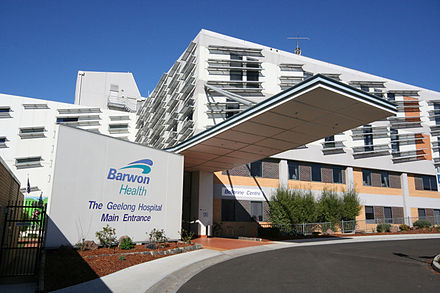
 1993 Feb;75(2):173–175. [PubMed] [Google Scholar]
1993 Feb;75(2):173–175. [PubMed] [Google Scholar]





 After that, a thin electrode is inserted through the channel of the needle, which is connected to a radio frequency generator and the tip of the needle is heated to a predetermined temperature. The patient, as a rule, does not experience any discomfort, the most painful moment of the procedure is the usual injection.
After that, a thin electrode is inserted through the channel of the needle, which is connected to a radio frequency generator and the tip of the needle is heated to a predetermined temperature. The patient, as a rule, does not experience any discomfort, the most painful moment of the procedure is the usual injection. ).
).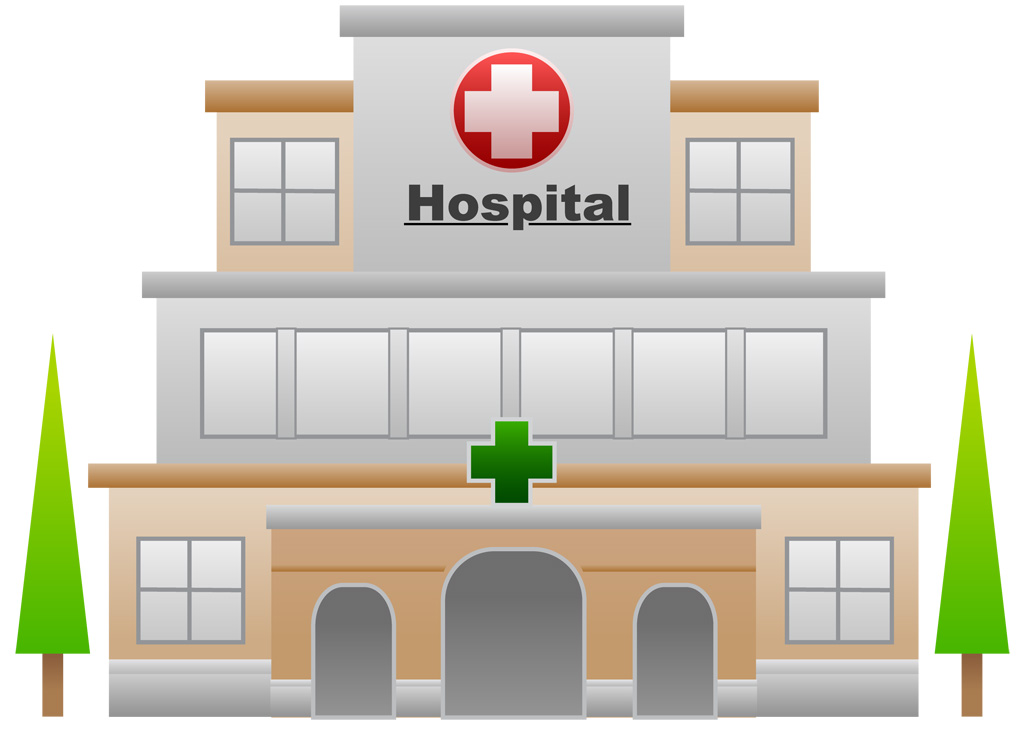 Doctors often prescribe minimal doses of antidepressants in the treatment of postherpetic neuralgia. Their main side effects include: drowsiness, dry mouth, dizziness;
Doctors often prescribe minimal doses of antidepressants in the treatment of postherpetic neuralgia. Their main side effects include: drowsiness, dry mouth, dizziness;